#also fun seeing the evolution of their fits
Explore tagged Tumblr posts
Note
Is there any idol or idols that you particularly enjoy writing? If so, what's the reason?
Excellent question, Elysia. Before I give an specific answer I'll give a generic one: I really enjoy writing idols that are over 30 years old, because they allow for more mature stories and idols from 2nd generation groups, to introduce them to new audiences. It's the whole reason I created my Legends series: to pay homage to them.
Now on to specific idols
Karina leads all idols in appearances in my fics. I really liked creating a character development that matches her own evolution as an idol, slowly growing into a more mature personality. It also helps she's quite popular and got really big tits.
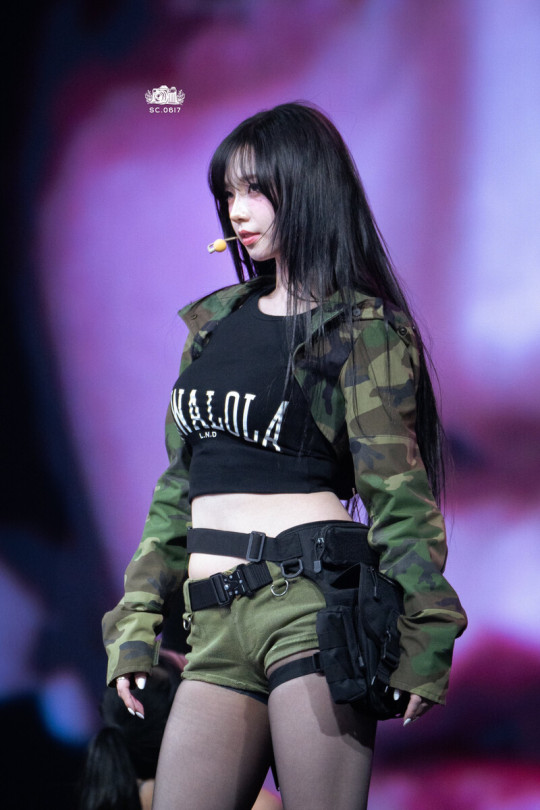
Sana is a very fun idol to write because you can combine her duality of being a cute girl and an alluring vixen at the same time and create very volcanic stories.

Yuna fits perfectly with stories where you just let her loose and do her thing to create an unstoppable force of sexiness.

Chaewon was the subject of my first fic here and I love to highlight her transformation since joining Le Sserafim, going from the cute pie in Izone to the sexy killer of today.
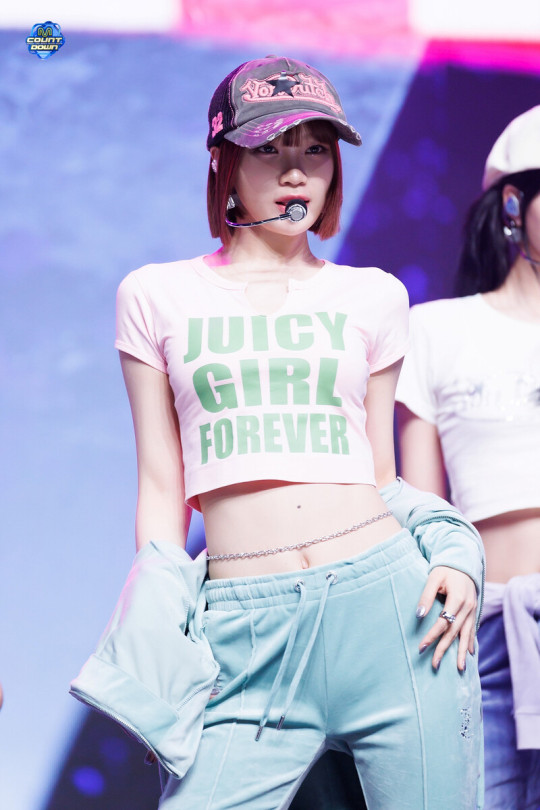
Yeji is a perfect fit for stories where she's the dominant alpha woman and pushses everybody around her to the maximum. Love write about her.
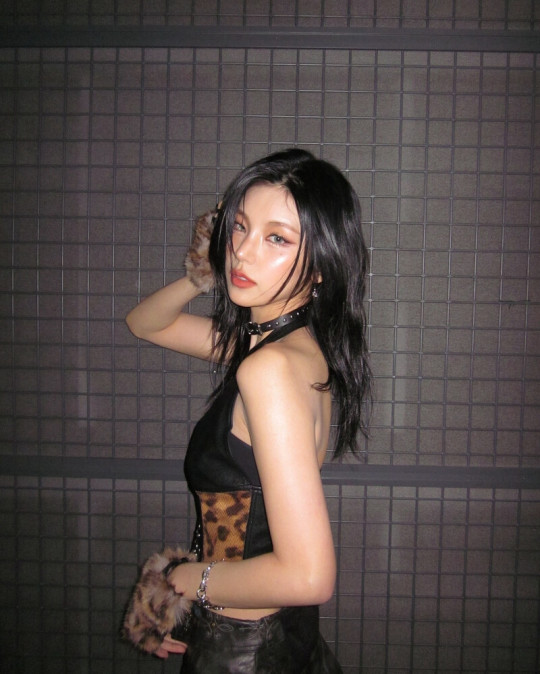
Momo just fits perfectly for any mindless hardcore scene where you just use her hot body for your pleasure until you get completely drained
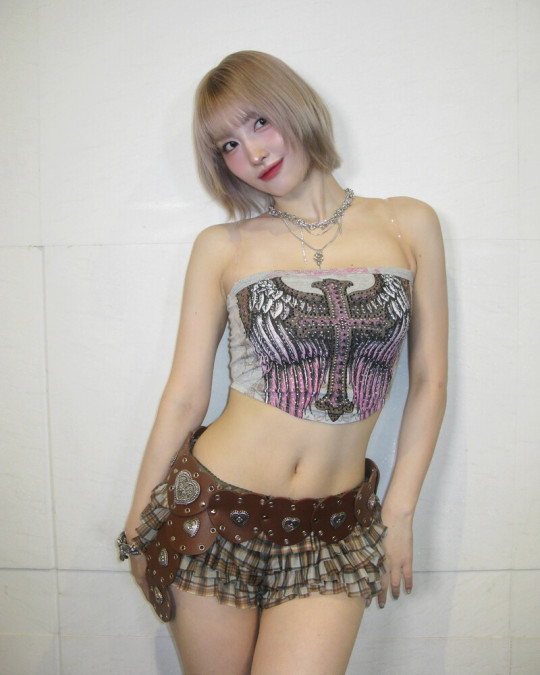
Eunbi is obviously my ult and the personification of a mommy. She hasn't even turned 30 yet but I already have placed her in my mommy pedestal and love writing any scene where she showcases her strong personality and big assets

I know it's very stereotypical to write Somi as bratty blonde bimbo but she fits the role perfectly and that makes writing any smut of her quite hot.
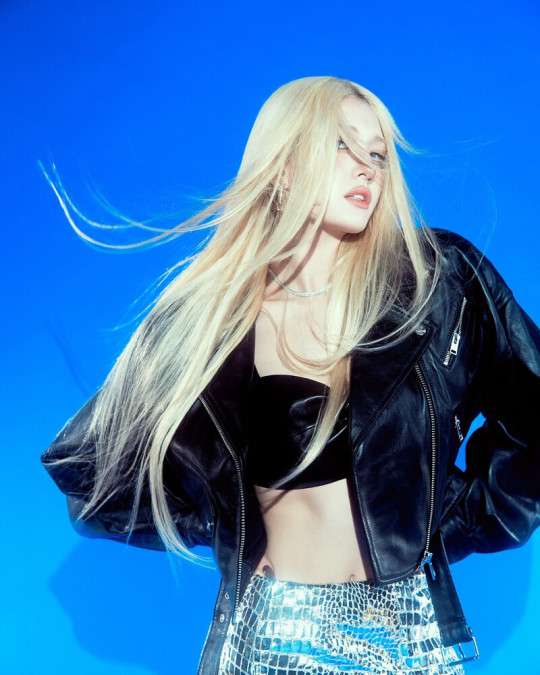
Last but not least is an idol that I think following the evolution of her will lead to some very enjoyable stuff to write about. Obviously talking about Wonyoung. I have done 3 fics with her already but I feel we're just starting to see her full potential. She's already a legend but is only going to grow bigger and I'm ready to register it.

56 notes
·
View notes
Text


#my art#rtvs#radio tv solutions#among us#might as well post these now#if all goes well I'll have a new one later tonight !#these are always fun cause they're simple lol#also fun seeing the evolution of their fits
199 notes
·
View notes
Text

the FL MtG cards are here!
this is like my fourth batch, but i haven't posted any of the previous ones, so let me show off some of the cards from all the batches!

briar and his three mr stoneses! these are the face commanders of the deck. there are alternate commanders that you'll see later, but this is the pair that i like using the most often.

more masters! (and bazaar-aligned entities). all the masters in the deck are vampires, and they also all have the seal of the bazaar as a watermark. just a neat bit of visual clarity, i think!

ocs! incuding mine. not all of them will be able to make it into the deck proper (for deck size and colour identity reasons) but i'm still so happy to have them all.

basic lands: seven of each. these gave me so much hassle back when i made them, but i think they turned out well!!! apart from the edge mountains which are like 70% black.

more lands! a triplet of creatureland which i feel work very well. the rest of them are neat too. whenever i say i have an underground sea proxy in the deck, people give me a Look, but how could i not! it's a perfect fit.


dfcs! the frames of these all had to be done by hand, which always took a while. i still think they turned out incredibly well, all things considered.

more creatures!! some legendary, some not. i made the decision pretty early that if i represent a named character with a nonlegendary card, i'd just cut the "the" from the name (see sallow spirifer and voracious diplomat). i think it works!

and noncreatures!! there's a vague treasure theme in the deck (as can be seen in the fall of london, revel in riches and spirifage (as well as a lot of the creatures)) but honestly most of the cards are flavour picks. still, artificial evolution has gotten me out of some jams. fun card!

aaaand tokens! which is everything. i reckon when i play this deck properly, i'll report back any fun scrapes that anyone's characters get into. like getting turned into a bug, or killing the god of death.
again, thank everyone who contributed OCs or art to this project. i'm very happy to have so many flumblr characters appear in the deck. all of the cards have art credits on them, but some probably aren't visible in the photos. so for proper credits (and as a ping list) i've included a list below the cut:
@alexis-royce: The Ex-Disgraced Academic; Mr Pages; Mr Stones (x2); New Blood. @anomalouscorvid: Darcy, the Appalling Artist; Furnace Ancona; Mr Transport; May, the Merry Gentleman; The Seventh Coil. @capn-twitchery: Captain Twitchery Lazaret. @ciriparipa: Mr Sacks. @dualclock: Oswald, the Decadent Parvenu. elena-illustration: M. Melchor. @esteemed-excellency: Haunted One; Hiram Hargrave. @feivelynart: Black Ribbon Duellist; The Carnelian Exile; The Grand Geode; London Ascends to the Stars; Thopter Token; Voracious Diplomat. u/Galvatyr: Poor Edward. @hells-dear-heart: Isidore Carter. @letters-of-fire: Boots the Cat; Giorgione, Crooked-Cross. @madame-butterfly-knife: Inessa Fonseca, Lyon. @milleart: Snuffer. @mledoesart: Mr Eaten. @oneirotecture: Warden, Scarred Silverer. @pinchbees: Merry Darthfellow. Sarah Warrington: Orsino Elderwood. @shazzbaa: Griz, the Efficient Commissioner; Mr Fires; Stargaze; Tragic Slip; Virginia, Lord Mayor of London. @sorrow2art: Cardiac Echoes, Spymaster. StagyTryout: The Avid Horizon @sunlessveils: Parabolan Kitten. @tears-n-tarot: Charlie and Artemis Burnet-Lin. @the-insouciant-scientist: Briar Hathaway, the Apologist; Mr Stones; Noman. @the-masterless-press: Betty Horvat, Pugilist. @the-noted-collector: Endemannus Korabl'nikov. @thedeafprophet: Harper Faraday. @thegreatyin: The Bandaged Scoundrel. @thunder-threnodies: Captain Francis Morgan Dargor. @torturingpeople: Edison, the Sybaritic Laureate; The Tender Pathologist. @velvetlinedbox: Doe, Waterlogged Detective. @viric-dreams: The Boil of Calamities; Drown in Dreams; Horiatio Digby; The Six Finger'd Scrimshander. @waterlogged-detective: Brett Heroux, Dandy Detective; Marian, Prickly Bluejacket; Namkuzu, Avaricious Meddler. @yuuuyang: Sigil-Ridden Navigator; Storm, God of the Roof; The Woods in Winter. @zeebreezin: August Shaw, the Black Rook.
and @failbettergames: Arcane Signet; Artificial Evolution; Beseech the Queen; Betty Horvat, Pugilist (bg); Black Market; Blood Token; The Cave of the Nadir; Censor; The Chapel of Lights; Clothes-Colony; Clue Token; Copy Token; Darkness; The Dawn Machine; Dreamscape Artist; The Echo Bazaar; The Fall of London; Flood of Tears; Food Token; Hecuba, Doomed Obliterator; Hideaway; Hillchanger Tower; The Horticultural Show; The House of Chimes; The Implacable Detective; Inessa Fonseca, Lyon (bg); The Irrepressible Heiress; Island (x7); Jack-of-Smiles; Khan's Heart; Laughable Reconstruction; Miniature Hellworm; Mountain (x7); The Mountain of Light; Mr Chimes; Perigee of Silver; The Prismatic Dowager; Probably a Coincidence; Revel in Riches; Rise and Shine; Road // Ruin; Sallow Spirifer; Salt, God of the East; The Scuttering Company; Shapeshifter Token; Spider-Council; Spirifage; Stone, God of the South; Swamp (x7); Treasure Token (x2); Underground Sea; Venderbight.
#aaaaaaaaaaaaaaaaa it's done!!#now i actually have to. make the deck.#anyway it should be fine#very very very very excited to finish this up#and having the cards physically here is super satisfying by itself#fallen london#FLN
337 notes
·
View notes
Text
My shout-out to queer youtubers
Hbombs list was great but obviously not comprehensive. I watch a lot of video essayists and wanted to give a little love to the smaller channels that fall under the radar. Please feel free to add to this list!
let's talk about stuff/Sarah Zedig
If you've seen Jesse Gender's videos on the Matrix movies you may already be familiar with Sarah. She does excellent film and culture analysis with a lot of great conversations on paratext and outside influence in engaging with text. Her video on Tunic is one of my favorites.
youtube
Pamphleteer
No one makes videos like hers, which has the side effect making them a bit hard to describe. I will link one of my favorites which describes the disconnected temporality of being older when you discover you're queer.
youtube
Turbo Queer
Really really under watched channel. Skylar covers a lot of topics from video games, to anarchist history and modern events, to autistic life, to current politics. For a fun one check out her video on the SpongeBob strike episode.
youtube
Kaz Rowe
Kaz does a fantastic job examining modern myths and manufactured history primarily pertaining to western Europe, Victorian & Edwardian England, and 1800-1900s US. And of course, talking about historical queerness in all its ambiguities and evolutions. I highly recommend their video on Weimar Germany.
youtube
drapetomania
drapetomania interrogates the politics of low class and high class art and entertainment from a queer and Black perspective. Their art history videos alone cover many angles of white supremacist history I haven't seen anyone else discuss and I'm very excited to see more from them. They are also a very under viewed channel that more people should see!
youtube
I am error
Evelynn's channel primarily discusses video games in a presentation style and voice most similar to Action Button reviews. There's something just a bit more personal here though. I hesitate to say cozy since that word has a bit of an infantilizing connotation, maybe comforting is closer. She puts an immense amount of thought and empathy into the experience of playing video games and the personal narratives we build with them.
youtube
Swolesome
For more transmasc perspectives there's Swolesome. He has a lot of interesting insights into the more traditionally masculine and "broish" communities like fitness as well as commentary on recent trans issues.
youtube
Shonalika
Music, disability, and aggressively non-binary. Their video on gender presentation in heavy metal was really insightful. I would also check out the video "Why I Wear Gloves" for more insight on invisible disabilities.
youtube
Vivian Strange
Vivian delights in being a bit of a contrarian- something I really appreciate. She's probably going to challenge you and you're probably going to disagree at times, which is what makes her channel so important. Her video on Marquis De Sade is powerful and a must watch (if you can stomach the subject material, although I would encourage you to try). I haven't seen her most recent video on Saw yet but I am extremely excited to.
youtube
2K notes
·
View notes
Text
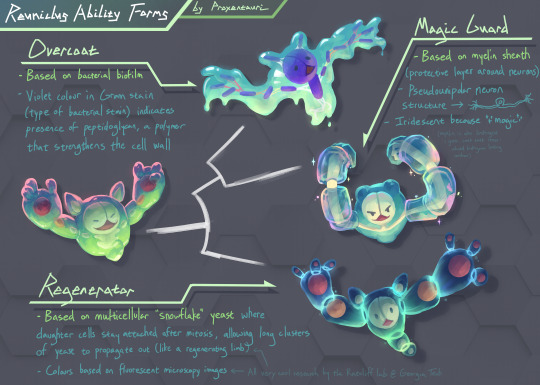
when i saw @n0rtist's ability forms i had to do reuniclus.....i hope it's not too late to be featured in the video! :0 we may have crossed from ability form into actual alternate form territory (see the original colours below the cut to see how crazy different they could have been)
as someone in evo microbio this was insane amounts of fun to do and i was able to pull inspo from places i'd never think to reference in my regular art!
itemized essay explaining the science and my design choices in more detail below the cut:
Ability Form 1: Overcoat
The science
Based on bacterial biofilm, which is basically when a bunch of bacteria get together in the same spot and start excreting this sticky slime stuff that structurally keeps the bacteria together (and also act as a medium for sharing useful resources between the bacteria, like enzymes, nutrients, etc.).
The design
The strings connecting the bacteria is based on what the slime stuff looks like on a microscopic level, specifically in electron micrographs like this one
The violet colour of the (rod) bacteria in the biofilm is a reference to Gram staining, which is a type of bacterial stain used to classify bacteria into two groups: bacteria that contain peptidoglycan in their cell walls (which stain violet) and bacteria that don't (these stain pink). Peptidoglycan is this pretty chonky polymer compound that's used to strengthen bacterial cell walls, so I thought it fit the role of Overcoat (which protects your Pokémon from things like weather)
Ability Form 2: Magic Guard
The science
Based on the myelin sheath, which are these segments of tube-like insulation that surrounds your neurons (see picture here). Mostly people talk about how it makes your neural signals propagate faster, which is true, but this ability form was more of a reference to its general protective role; it physically and electrically insulates your neurons. (Surprisingly I could not find a super good primary source for myelin providing physical protection, so don't cite me on that, but given it's literally a physical barrier this seems like a pretty safe assumption.)
The design
The entire body is based on a pseudounipolar neuron, which just means it only has one part extend out of the main body but shortly after it splits into two long parts (axons). I could have made it a bipolar neuron I guess (two parts extend out of the main body), but having a neck made it look a little closer to the base form's body
I wanted to give it dendrite fingers but it looked too creepy. I'm not sure if the three long fingers I gave it in the final design made it less creepy.
Since Overcoat and Magic Guard are both shield-type abilities, they're drawn as more closely related on the the phylogenetic tree (white thing in the center).
Ability Form 3: Regenerator
The science
This one is the most hype imo. In 2015 Dr. Will Ratcliff did this pretty sick experiment about the evolution of multicellularity (since at some point a long time ago life was single-celled) where he kept propagating the same single-celled yeast for a mega long time, and eventually the yeast evolves a multi-cellular "snowflake" form where after undergoing mitosis, the resulting daughter cells don't split, but stay attached, resulting in the yeast forming these clusters that create these cute little branches. I don't know where I was going with this. Oh right, the branching out reminded me a lot of regenerating limbs, so that was the inspiration for this one.
Anyway this is like one of my favourite experiments ever, there's some pretty good news articles out there about if you want to learn more about it!
The design
The segments are yeast cells, and the balls within are the nuclei.
The colour scheme was based on this fluorescent microscopy photo of the snowflake yeast. Originally I had the nuclei be bright orange in reference to this other microscopy picture but I thought the colour scheme was deviating too much from the base form for an ability form lol.
Speaking of here's the original unhinged colour drafts:
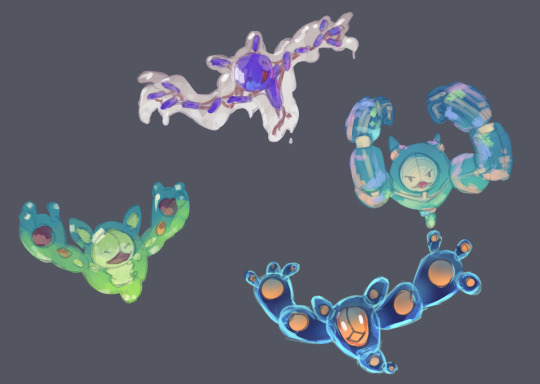
if i did commit to the full alternate form i think the biofilm one is poison, myelin one is fighting, yeast one is uhh...dude idek, i mean the fluorescent microscopy vibe is pretty strong so maybe electric lol? it's giving ghost vibe too though
i was originally planning on citing stuff but it's a tumblr post and I've already linked Ratcliff's work and i want to go to bed lol. If any of the science is wrong just call me out i'll fix it. otherwise, i hope someone out there appreciates the science references !! it's 8am good Night
#art tag#biology#evolutionary biology#microbiology#reuniclus#pokemon#ability forms#biology art#i guess#bacteria#evolution#nintendo#pokemon fanart#pokemon gen 5
370 notes
·
View notes
Note
haven’t watched s4 of the umbrella academy but i know five and lila kissing there omg if only every tv show and book have listened to our weird ships…
okay so i spent the last few hours speed-running through this season and OH MY GOD not only did they pay attention to our weird ship, but it's like INCREDIBLE levels of fanfic!!! like, the YEARNING alone??? like, okay, the writers did the "stuck in a time bubble together" bonding/romance storyline, but what i loved about it is they planted the seeds early in the season with lila not only feeling stuck in her marriage but sneaking out and running into five and having fun with him sleuthing just like in past seasons!!! like, it's not just "we're only now seeing each other's potential because we're stuck in the subway" it's more like "we've always been kindred spirits and now we have some down time to really let that sink in". it feels like the culmination of their evolution from enemies to frenemies to friends to lovers??? like all that friction from past seasons finally coming to fruition. hell, at one point five even straight up tells her diego can't give her what she needs??? like, they're admitting they're happier together and fit better together, in and outside of the time loop!!! and i love love LOVE the writers for not doing the super tired switcheroo where, once lila returns to diego and her family she suddenly realizes the whole thing with five was a fever dream. NO!!! no no no, all the feelings are still there like AAAAH it's such good angst, because she keeps exchanging loaded and uncomfortable glances with five while diego is trying to hold her/kiss her??? and five looks SO upset??? it's ao3 levels of delicious drama!!!! diego even asks her if she loves five and she CANNOT deny it, and her whole family and kids are right there but!!!! they still have these feelings and i love how shameless the show is about it!!! one of the big subplots of the final episode is lila having to give up her family to sacrifice herself, but it's also framed as her choosing five and just sort of collapsing in his arms telling him she hates him for this??? and he says "i know"??? HELLO??? also just the yearning and pining even mid-apocalypse!!!! five can't focus on anything else except her, literally they're all about to die but their lil drama is still going on!!!! (complete with diego and five punching each other and rolling on the floor fighting over lila!!!!) it's SO good. also props to the five actor for truly LOCKING IN and just leaning so much into the yearning. every second he looks at lila it's like she hung the moon and he is dying to be with her. i JUSTTTTTTT and the fact that lila hates bracelets and she didn't wear the one diego got her for valentine's, but she wears five's???? and loves it??? and he made it out of all the scrap metal for her???? soooo many little moments like that!!! when he says "i aim to please" kneeling in front of her????? when he says "you know why" when she asks him why he kept the notebook with the escape plan from her!!!!! he just wanted to be with her forever in the greenhouse timeline GAAAAAH. like, this is now gonna be my standard for "non-canonical ships that didn't seem like they could ever have a chance but became canon anyway"!!! cuz usually we clock the chemistry and the banter and the connection but we have to make do with our lil AUs because we know the writers wouldn't dare. but they did!!! they did it this time!!! GOD BLESS i feel so validated in this chili's tonight!!!
#five x lila#fivela#five hargreeves#lila pitts#tua spoilers#replies#been shipping them since 2020!!!! it took 4 years but we won
244 notes
·
View notes
Text
Meig's Comprehensive Guide to Reptiles, aka: the vast majority of land vertebrates
Welcome! This is another long post by me, one of tumblr's most annoying resident paleontologists. But I promise: it'll be fun, it'll be engaging, and you'll be glad you read it.
What the Everloving Fuck is a Reptile?
Well, back in the day, you probably learned reptiles were land animals, with backbones, that were covered in scales, were cold-blooded, and laid eggs with hard shells.
But, you see, we classified organisms based on traits back when we didn't know about evolution. Or prehistoric life. And turns out, there are a lot of things in the past that do not fit in the categories we made based on living things today. A lot of things.
Soooooooo... now we classify based on evolutionary relationships! Aka, family trees.
So what is a reptile?
A reptile is any animal more closely related to living crocodilians (Crocs, Gators, etc.) than to rodents.

Aka, back around ~330 million years ago, animals that laid land-adapted eggs split into two groups: Proto-Mammals (that would eventually become mammals), and Reptiles.
So, a reptile is, anything closer to the group of "classical reptiles" than to mammals. Simple enough. And it is the entirety of an evolutionary unit - a single clade, consisting of a common ancestor and *all* of that ancestor's descendants.
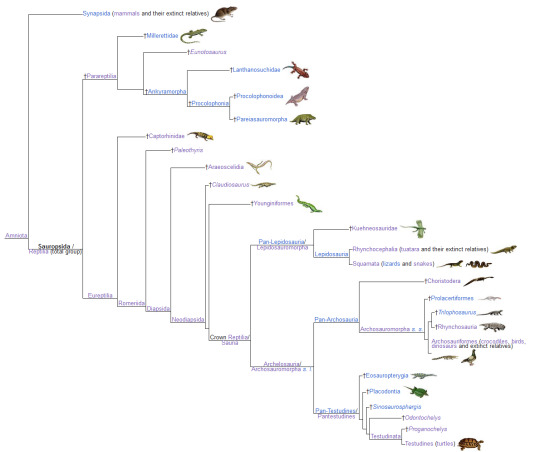
Turns out, this includes birds, but I'll get to that.
The First Reptile Group to Branch Off: Parareptiles
So now we go through our groups of reptiles based on their evolutionary/familial relationships, and the first group to branch off from other reptiles were the Parareptiles.
(Note: Their evolutionary history is in flux and it's possible they're actually further down on the reptile tree, or not even a natural group. for now, we're going to go with them as the earliest branching group and assume they're a single thing, even though that is probably going to be very wrong in the next few years).
These were weird mfers, living from around 310 million years ago until 200 million years ago. They had robust bodies that were low to the ground, with legs *usually* sprawled out on either side. They also had very robust and broad skulls. Many of them look superficially like lizards, in that they're quadrupedal animals with limbs splayed out to the sides, but they were *nothing* like lizards. While early members of the group had long tails, over time, the bodies of parareptiles became more stout with shorter tails. They also had swollen, thick vertebrae, and stout upper limb bones. They were CHONKY.

The earliest members to branch off were the Mesosaurs, a small group of aquatic reptiles! They were long and slender, and quite small compared to later aquatic reptile groups. The next group to branch off were Millerettids, which were small insectivores with superficially lizard-like apperances. Most Parareptiles were Procolophonomorphs, and included everything from the bipedal Eudibamus to the huge Pareiasaurs that were major megafaunal herbivores during most of the Permian period.
All Parareptiles, as far as we can tell, are extinct today. Unless their evolutionary relationships change. Yay science!
All the rest of reptiles are in Eureptilia, which have smaller bones in the lower back of the skull that no longer connect to the roof of the skull. So, skulls like living reptiles!
Captorhinids
The next group to branch off are the Captorhinids, a group of interesting little reptiles with shorter tails, sprawling limbs, and weirdly boxy heads. Living from 300 to 252 million years ago, they started out as small carnivores, and eventually evolved to be large herbivores!
Protorothyridids
Next to branch off are the Protorothyridids, which lived only in the latest Carboniferous. They were small, superficially lizard-like animals, but their limbs were a lot more slender and long than lizards, as were their bodies and heads. In fact, they seemed to have been adapted for climbing trees, making them among the earliest known animals to do so!
All remaining reptiles are Diapsids, characterized by having two holes (postorbital fenestrae) behind the eye socket. This is where all living reptiles are.
Araeoscelidans
Our first group of Diapsids are the Araeoscelidans, which - again - were SUPERFICIALLY lizard like. I cannot stress enough that nothing so far has been an actual lizard. In fact, they had more slender limbs, longer tails, and less specialized heads than lizards. That said, they probably lived similarly to them, though some members may have been adapted for climbing, and others for swimming.
Unfortunately, we're now at the part of the tree where evolutionary relationships are a mess. Parareptiles may actually go here, or only some of them. Lots of different groups diverged here very quickly. It's a messssss. I will go through each group, but just know all we know is that these groups fall outside the next big chunk - Sauria - but within Diapsids.
Younginidae
Younginids are reptiles from right around the End-Permian extinction, basically only living in the latest Permian and earliest Triassic. They were as big as living monitors, and they had less kinetic (mobile) skulls than living reptiles. They would have been superficially lizard-like - again - but very different, and they had ridiculously long tails and toes, making them powerful movers.
Tangasaurids
Tangasaurids were a weird group of end-Permian to earliest Triassic animals, with some adapted for aquatic life in freshwater and lake environments, and other living life on land like other reptiles. As such, Tangasaurids represent another experiment in secondarily-aquatic life among reptiles. The land dwellers had long toes for efficient land movement, while the aquatic ones had those amazing water adapted traits that we associate more with living species. In fact, some of their tails were flattened, like sea snakes today!
Longisquama

For the sake of my sanity, I'm trying to group things up in as few groups as possible without ignoring anything. But this is a weirdo, and it doesn't have any family members, so I have to talk about it alone. You know that reptile you may have seen in books with the hockey-stick like things coming off of its back? That's Longisquama. The problem is, we don't know much about it. It had a small, slender head, and a typical reptile body, with limbs splayed out to the sides. Those fins on the back were *not* like feathers, but something else entirely - maybe just elongated scales. Or maybe it died on top of a plant (unlikely). Many bad scientists point to this animal and say its the ancestor of birds, but that's been thoroughly debunked at this point. It lived in the Middle Triassic, around 235 million years go.
Thalattosaurs
Thalattosaurs were Triassic reptiles - so living between 252 and 200 million y ears ago - that were semiaquatic! They had long, narrow skulls adapted for grabbing fish, and slender bodies for moving through the water. Their tails were long and paddle-like. Some of them had long necks, while others had shorter necks. Some even had a hook-like end of the snout for trapping slippery fish prey! They ate many different things, with a few species adapted for crunchy marine food, others for slippery, and so on.
Ichthyosauromorphs

Some of the most famous extinct reptiles go in this group - the group of reptiles that essentially evolved to be dolphins before dolphins were even a thing - a classic case of convergent evolution. These marine reptiles were extremely successful, living from the beginning of the Triassic - 252 million years ago, possibly even older - until the middle of the Cretaceous, 90 million years ago. We have early forms that show only partial adaptations to marine life, but they very quickly became fully aquatic, even giving birth to live young under water. Some of the largest marine animals ever fall into this group, including Shonisaurus and Shastasaurus. The earliest members showcase the evolution from typical reptile-shape to the weird reptile-dolphins they would become. Proper Ichthyosaurs had big eyes, round bodies, long narrow heads, and four flippers - one for each limb. Their tails were also long and ended in a fin like living sharks and whales. Some even had a dorsal fin! This group is *huge*, so I recommend digging into their wikipedia pages to learn more! Note that these are their own, huge, distinct group of reptiles - completely separate from lizards *or* dinosaurs!
Claudiosaurus
Claudiosaurus is another unique, who knows where it goes reptile, and it showcases another shift into aquatic life for reptiles during the end-Permian mass extinction. It was 60 centimeters long, and had flippers on its feet. It probably couldn't move very much on land, so it would have lived most of its life in the water. Its tail, torso, and neck were all very long, while its head was on the smaller side. Its limbs were also quite long compared to its body size. So this was a weird animal - and we're not sure where it falls in the story of marine reptiles yet. More research on this critter is needed!
Choristoderes
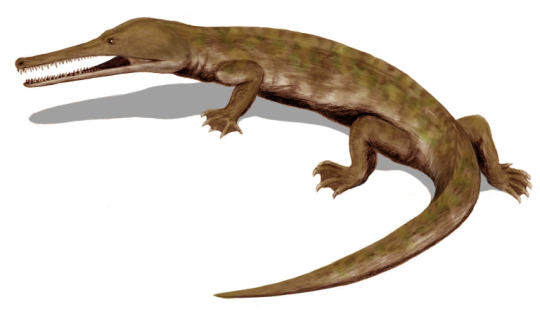
Choristoderes were semiaquatic, unplaceable reptiles that varied a lot in size over their time and managed to live through to the Miocene - so they existed from sometime in the Triassic to as recently as 11.6 million years ago! Some were as small as 30 centimeters, while others grew up to 5 meters. They were convergently similar to living crocodilians, with bodies built for semiquatic life and long narrow skulls for grabbing fish. In fact, their heads are kind of weird looking - like a heart at the base with a long projection coming off of it, if you look at it from the top. They had very simple teeth, and thin overlapping scales that were probably very soft in life. They also had webbed feet! They were exclusively fresh water animals, and may have had eggs that hatched immediately after being laid. It's wild we missed them being extant by like... a blink of an eye geologically.
Weigeltisaurids

Reptiles have evolved gliding membranes from their ribs multiple times, and this is the first one we're talking about in this article. They lived at the end of the Permian, between 259 and 252 million years ago - only going extinct in the mass extinction, though a possible Triassic fossil is known. They were not close to lizards or dinos, but had a lot of convergently similar traits to lizards. The lower ribs, aka modified gastralia, are pulled out to the side in pairs of long hollow rods, which would have supported a gliding membrane that was controlled by the abdominal muscles. They were big, which made them less efficient gliders than living gliding lizards. Their heads were very triangular, and they had extremely long tails.
Sauropterygia
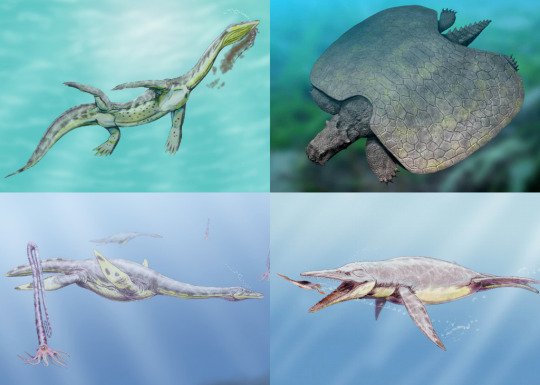
Okay, so this group is going in "miscellaneous reptiles" because currently their evolutionary origin is in flux. We used to think they were close to the lizard and snake group, which we'll get to at the end of this post (long way to go). Then we thought they were close to turtles, and we didn't know where turtles went, so they were kind of in limbo. Then we figured out turtles were closer to crocodilians and birds than to lizards and snakes, so we dragged Sauropterygians there with them. And now studies are indicating that Sauropterygians and Ichthyosauromorphs are closely related, along with a bunch of other marine reptiles. And sometimes that group comes outside of crown-reptiles (Sauria, in a sec), and sometimes that group comes into the close to crocs and birds group like turtles. I don't know. I don't know where they go. They're going here.
Anyways, Sauropterygians includes a lot of weird marine reptiles. Helveticosaurs may be in this group - they had wide torsos, short limbs and tails, and a small square head, and were early marine reptiles during the middle Triassic. Saurospharigds may also go here - this group were superficially like turtles, but they were actually convergently similar, not related to living turtles closely at all (unless all Sauropterygians are?). They had elongated flat vertebrae on their backs, with matching chest ribs, to form a rib basket. Placodonts are the first definite group of Sauropterygians, which were *also* weirdly turtle-convergent. Some members of this group had huge scutes on their bodies, for part or all of their torsos, to protect them - different anatomically from turtle shells, but similar looking from a distance. They had teeth built for crushing shellfish, and had long tails to aid with swimming. Many members just looked like typical marine reptiles, however, and did not have those shells that later members had. Nothosaurs were Sauropterygians with long necks and tails and limbs that still had toes and were capable of going on land, but were more similar to the famous Plesiosaurs than the Placodonts were. Their feet were webbed, they ate primarily fish and squid. Pachypleurosaurs were similar, but had longer necks and limbs that were unable to go on land. The next group, Pistosaurs, had full flippers on their limbs, and long necks with triangular heads. This includes all Plesiosaurs, aka "Loch Ness Monsters", as well as things like Liopleurodon - many forms had very long necks, while many others had short necks, all across this group. Sauropterygians lived for the whole of the Mesozoic, showing up in the Early Triassic and lasting until the very end of the Cretaceous, and lived worldwide.
Drepanosaurs

In the Triassic, a group of mystery reptiles - possibly in this group of not closely related to anything today weirdos, possibly closer to crocs and birds - that truly showcase the weirdness of the Triassic Period. Living between 230 and 201 million years ago, Drepanosaurs had very long bodies, with flexible limbs and hands adapted for grasping branches, including opposable toes on the foot and giant claws on the hands. Their heads were very small and triangular. They had a hump on their upper backs to allow for strong muscle attachments, giving them the ability to rapidly catch insects in midair. The tails of some species ended in a freaking extra claw. In short, they were generic reptiles - or almost-archosaurs - trying their damnedest to be monkeys. And they got terrifyingly close. Some had heads that were so convergently bird like that they confused bird researchers for years, but it was convergence - in fact, the beaks of Drepanosaurs are completely different anatomically.
SAURIA
If we defined reptiles above as everything closer to living reptiles than to living mammals - ie, the most inclusive group that has crocodiles but does not have mammals - this is the *least* inclusive group that still includes every living reptile. So like, Sauropsida - where we started - is like a huge clan, with only some surviving members, but the most recent grandparent those ancestors shared was not the start of the clan, it was later on in the clan's history. I hope that made sense. Anyways, this is the group we call Crown-Reptiles.
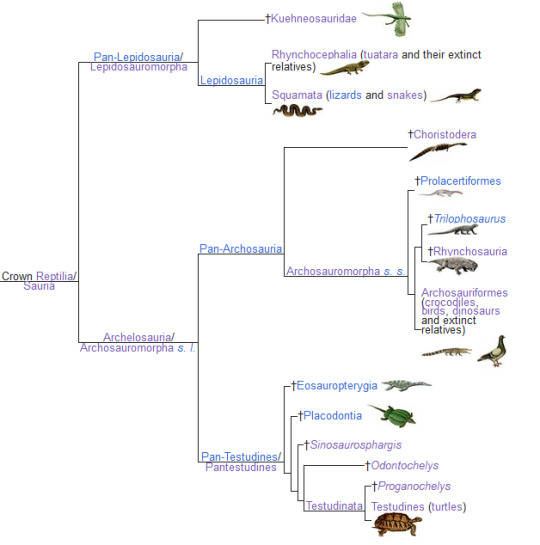
And it, by that definition, has to include birds. Because birds and crocodilians are more closely related to each other than either are to lizards and snakes. Saurians first appeared at the end of the Permian, and diversified like crazy during the Triassic when all the niches opened up after the Great Dying. We can thank the End-Permian extinction for the sheer diversity of reptiles we have in the fossil record *and* today! Because while all those lovely friends from before were great - including the ones that persist to the Jurassic - most reptiles? Are in Sauria. There are so. Many. Reptiles. In fact, today, over 20,000 species of animals are reptiles! Mammals are only 5,513 species, and living amphibians are at 7,302. Among tetrapods, Reptiles are King! Saurians come in two groups: Archelosaurs, and Lepidosauromorphs.
ARCHELOSAURIA
The first division of Saurians is Archelosauria, the group that consists of Turtles, Crocodilians, and Birds, and *all* of their extinct relatives. For a while the position of turtles was uncertain - were they the only surviving Parareptiles? Were they cousins of Lizards? But genetic data has revealed that they go with what we call "Archosaurs" - Ruling Reptiles - the group of crocodilians and birds. How their fossil relatives are or are not a part of that story is where the mess remains. Archelosaurs come in two main flavors: Pantestudines, and Archosauromorphs.
Pantestudines
All living turtles, and everything closer to them than to any other living thing, go in this group. Turtles are truly bizarre animals, because their shells are unique among animals and not repeated by any other group. During development, ribs grow sidewise into a ridge along the back, entering the skin and supporting the carapace, which is made of dermal plates that form a hard shell, that is then covered in scutes made of keratin. The lower ribs, or gastralia, along with the collar bones, extend to form the Plastron, or lower shell. The lower shell flattens out and extends on the sides to connect with the carapace. Scutes also cover this side of the shell. It's just *weird*. Turtles are just *weird*. They originally evolved from aquatic ancestors, such as Odontochelys; though some forms became secondarily terrestrial again, with many lines of the group going back and forth - making this a rare example of a secondarily aquatic tetrapod returning to the land! Turtles laugh in the face of biome preferences.
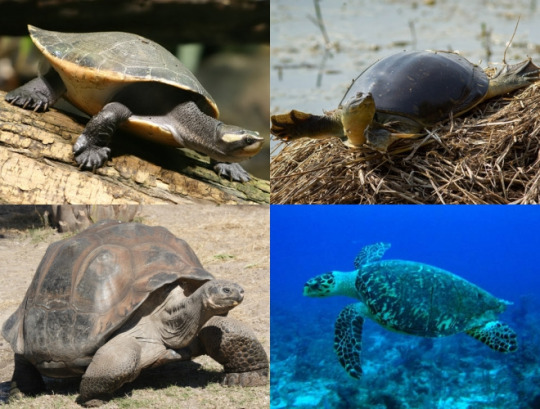
Many extinct turtles took on interesting forms, with some having large feet, others having extensive ornamentation - horns and bumps and nodules - on their heads. Some, like Meiolania, grew to extreme sizes. As the turtle group evolved, many returned to the sea, and became the largest ocean-dwelling turtles of all time - animals like the somewhat well known Archelon. Living turtles come in two main groups: side-necked turtles and hidden-necked turtles. They differ exactly how you'd expect - side neck turtles will retract their heads via the side of the body, curling it around the circumference, while hidden-necked turtles curl their neck into the body, pulling the head directly back into the shell. Most turtles - and all tortoises - fall into the hidden-necked group, including sea turtles! Turtles vary in size, limb length, head shape, and tail length, and live on every continent in the world today. In general, turtles are omnivorous, though many species show preferences for plants or meat.
ARCHOSAUROMORPHA
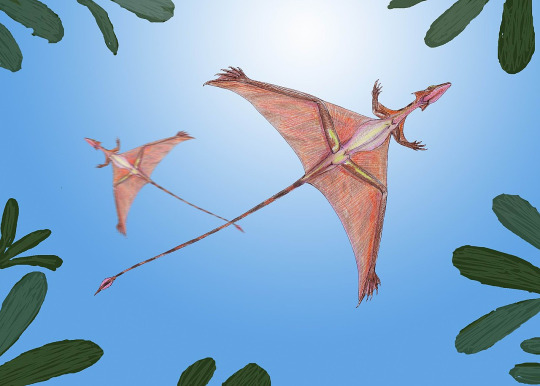
We now dive into the rest of this side of the reptile family tree, everything closer to crocodilians and birds than they are to turtles - the Archosauromorphs. During the Triassic, this group took on many different and weird forms, making the entire group one of the most diverse groups of reptiles in terms of species count and differences in shape. All of these animals have a few things in common in their skeleton, though modern archosaur features took a while to evolve. Animals such as Sharovipteryx, the long-tailed reptile that used its legs for gliding membranes, the end-Permian survivor Protorosaurus, the *ridiculously* long-necked Tanystropheus, and aquatic Dinocephalosaurus were all early branching members of this group. But as we get closer to Archosaurs proper, we see more and more weirdness.
Allokotosaurs

Allokotosaurs were weird large herbivores, with sprawling limbs and long tails, as well as short necks and boxy heads. They lived throughout the Triassic and were just bizarre. Some species even had horny beaks in the front of their jaws to help clip off plant material. One species, Teraterpeton, had a long, downward-pointing mouth. Other species had long, thin necks to reach higher vegetation. And, to just round out the craziness that is this group, Shringasaurus falls in here - a weird reptile with a sprawling body, shorter tail, long neck, small head, and horns on its head. Just for funsies. These herbivorous behemoths were some of the most unique animals of the Triassic Period.
Rhynchosaurs

During the Triassic, there was a group of small, quadrupedal Archosauromorphs that really showcase the fun of convergent evolution. See, these little animals? Were Archosauromorphs doing their best to be rodents, long before rodents would ever appear. These little herbivores had short tails, stout bodies, short limbs, and front teeth that grew long for gnawing on plants - much like living rodents. Some got as long as two meters, and these were a fixture of much of the Triassic, before going extinct during the end-Triassic extinction.
Proterosuchids
Proterosuchids were a group of Archosauriformes - so still Archosauromorphs, but now getting closer to proper Archosaurs - that were a group of predators that really capitalized on the whole End Permian Mass Extinction thing. Found only in the latest Permian and earliest Triassic, these were medium sized reptiles with long tails and stout bodies. Their heads were long and narrow, with a hooked upper jaw interlocking with the lower jaw. They looked superficially like crocodilians, but lacked the scutes that are found in said group.
Erythrosuchids

The next group to branch off, the Triassic Erythrosuchids were the apex predators of the Early and Middle Triassic, before Pseudosuchians really took over later on. They were extremely large, reaching between 2.5 and 5 meters long, with huge heads and robust bodies. When I say huge heads, I *mean* huge heads - they were robust and deep, and the upper jaw has a distinct dip that goes down lower than the lower jaw, giving their heads a very characteristic shape. They also are some of the first animals to have the Archosaur Hip Shape, so they only had a semi-sprawling posture - their limbs were more nimble!
Euparkeria
Many people have heard of Euparkeria. They even think it's a dinosaur ancestor. Well, it's not, not really. Euparkeria goes around here in the Archosaur tree, closer to living Archosaurs than the Erythrosuchids but not as close as the next group. In truth, Euparkeria is very similar to what we'd expect the common ancestor of both crocodilians and dinosaurs to be like, with fairly upright limbs - though recent studies indicate it was only quadrupedal, not capable of bipedalism. It had a long, rectangular skull, similar to early members of proper Archosauria, and osteoderms (scutes) on its back. This little guy from the Early Triassic gives us a hint as to how Archosaurs came about, with the specialized ankles we'd see in the Archosaur group first showing up in Euparkeria.
Proterochampsia
The closest group to living Archosaurs, Proterochampsians were weirdly crocodilian like, to the point of often being found to be in the crocodile line of Archosaurs! These were Triassic reptiles shaped very much like living crocodilians, with long wide bodies and tails, and very long triangular skulls. They had sprawling limbs, and scutes along their backs and bodies. The heavy osteoderms are well documented in a fully aquatic member, Vancleavea. In fact, on that side of the group, the animals had less of a crocodilian like head and more of small, tempered heads, possibly due to different lifestyles.
Phytosaurs

Okay, these guys are either actually in the crocodilian line or just outside of Archosauria, it's a huge question. They were also weirdly crocodile like reptiles that lived during the Triassic, but were distinct from the Proterochampsians. Some had long snouts with conical teeth to eat fish, but others had shorter snouts with differently shaped teeth for eating land animals. They had distinctly serrated teeth, unlike living crocodilians, and didn't have erect or even semi erect gaits like living Archosaurs. Though many specialized for life in the water, this was a very diverse group that was doing a lot of the crocodilian-type jobs of later periods, but weren't crocodilians. They didn't have the secondary palate bone that allows crocodilians to breathe when their mouths are full of water! Weirdly, they were way more heavily armored than crocodilians, with heavy bony scutes and dense abdominal ribs (gastralia) for protection. Finally, they had their nostrils near their eyes, rather than at the end of the snout - allowing for them to breathe while submerged without that secondary bony palate.
ARCHOSAURIA
This is the group of the most recent common ancestor of living crocodilians and birds, and all of that ancestor's descendants. So while everything from Archosauromorpha to this have been closer to Archosaurs to anything else, these are the proper Ruling Reptiles as we currently define them. Archosaurs have teeth set in deep sockets, extra openings in the skull, and a pronounced ridge on their femur. They also only have claws on their first three fingers of the hand - the fourth and fifth, if they have them, lack claws. Archosaurs immediately branched into two groups: Crocodilians and their relatives, versus Birds and their relatives. We will start with the Crocodilians.
Pseudosuchia
A lot of early crocodilian relatives were superficially similar to living members, so they were originally given the name "fake crocodiles" or Pseudosuchia. Then, it turns out, that group was just the ancestors of crocodilians - which underwent many different shifts and turns in their evolution - so that means real crocs are... fake crocs. Remember friends, the names we give these things? Are extremely arbitrary. Do not take them for indicators of what these things are like. Early members had very broad, bulky skulls and even somewhat upright gaits, allowing for active predatory lifestyles. Everything from here until Avemetatarsalia are all Psuedosuchians.
Aetosauriformes
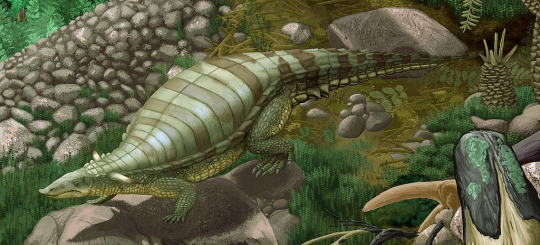
In the Late Triassic, there weren't any armored dinosaurs, but there were Aetosaurs! These animals had extreme armor all over their bodies, with overlapping scutes on their back and often spikes or other armor on their limbs and back. They also had small, triangular heads, built for feasting on a variety of plants! These were extremely common animals, often having weirdly pig-like snouts if you squint, and mostly sprawling limbs. Found worldwide, their armor would have allowed them to be protected from the many varieties of large predator reptile around them, though they still ultimately went extinct during the end-Triassic extinction.
Poposauroids
A group that used to include other animals, this weird hodgepodge of a variety of Triassic Pseudosuchians including sail-backed animals, toothless creatures with beaks, and animals weirdly similar to dinosaurs to the point of being confused with them in the past. All of these crazies had upright limbs, and in the Shuvosaurids, this lead to animals evolving into essentially scaly lithe bipeds, what we used to think dinosaurs looked like! In fact, Effigia and Shuvosaurus both had long necks, beaks in the front of their small mouths, and completely upright postures, making them just straight up look like scaly versions of their dinosaur neighbors like Coelophysis. Alas, the Poposauroids, like many groups, went extinct in the end-Triassic extinction.
Rauisuchians
The top predators of the late Triassic, these were very large terrestrial pseudosuchians, with large boxy heads and upright limbs. This allowed them to move quickly and attack prey efficiently, making them extremely well adapted hypercarnivores. In a lot of ways, Postosuchus and its relatives in this group were convergent with later theropod predatory dinosaurs - even having huge boxy heads like Tyrannosaurs would. This means that what dinosaurs one day perfected, crocodile relatives tried out first! Alas, like most apex predators, they were not immune to mass extinctions, going extinct during the end-Triassic.
Crocodylomorpha
Now, at this point, the line that would lead to living crocodilians - Crocodylomorpha - actually look less like living crocs than the Rauisuchians and Phytosaurs did at the same time! These little reptiles were quadrupedal, thin, and built for running fast - they were lithe creatures built to avoid all of those big scary animals around them. But these were the only Pseudosuchians to survive the end-Triassic! And the first group to branch off here?
Thalattosuchians

During the Jurassic and earliest Cretaceous, a common feature in the oceans were marine crocs - the Thalattosuchians! Still fairly distantly related to modern crocodilians, these reptiles convergently evolved many of the same adaptations for ocean dwelling as the Sauropterygians we met earlier. Some members, like Metriorhynchus, even evolved flippers and a tail fin! They had elongate bodies and very long, thin skulls for catching fish and other animals. They also gave live birth - possibly the only Archosaurs to ever do so!
Many more croc relatives would evolve into a variety of active terrestrial predatory niches, so we're going to jump down to the next major group:
Ziphosuchians
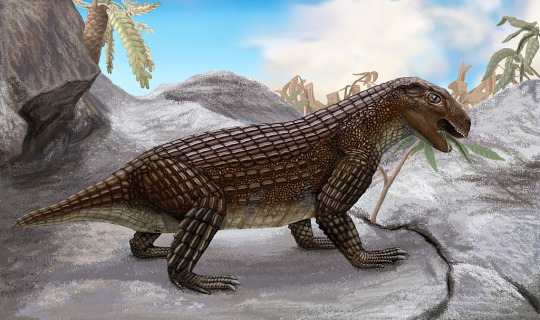
Ziphosuchians were a group of croc relatives that actually lived from the Jurassic until the Miocene, as recently as 11 million years ago. These animals were ridiculously diverse in both diet and lifestyle, with a wide variety of shapes and sizes. Some, like Kaprosuchus, straddled the line between aquatic and terrestrial predation; others, like Sebecus, were completely terrestrial and huge predators during the Cenozoic; others had weirdly diverse teeth and thus potentially unique diets; and still others just straight up evolved to eat plants or to be omnivores, even shortening and squishing their skulls to be dubbed by modern researchers as "Pug Crocs". This huge diversity of form and ecology makes Ziphosuchians an intriguing extinct group, one that will benefit from increased research in the future. Some were even built for running around, and others had duck like snouts! This was a very diverse group I recommend learning more about.
Neosuchia
The rest of Pseudosuchia - Neosuchia - are all living crocs and their closest relatives, closer than those Ziphosuchians. Many were very similar to living crocodilians, even filling similar niches, though evolving to do so independently. Some had huge, long jaws, potentially to hold onto a throat pouch for catching large prey during the Cretaceous. Some were slender, marine reptiles, evolving to be aquatic again! The Dyrosaurids were a group of global marine, long-jawed crocs that survived the end-Cretaceous extinction and were some of the only predators in the post-extinction seas other than sharks. They had teeth in deep pits, distinct from other croc relatives. While they never developed flippers like Thalattosuchians, they did adapt their limbs for more efficient marine locomotion.
Crocodylians

Living Crocodylians, a group of Neosuchians, only first appeared at the end of the Cretaceous, and were not the only surviving Pseudosuchians until relatively recently - many other forms, like the Ziphosuchians and Dyrosaurids, lasted until late in the Neogene, within the last 20 million years. Crocodylians have semi-sprawling limbs, lots of scutes all of their bodies, and even hearts like birds, pointing to their close relationship. They are semiaquatic animals, spending time both on land and in the water, and have their nostrils on the ends of their jaws. They have a sturdy second palate that allows them to hold water in their jaws and breathe at the same time! They also have some of the most powerful bite forces of any animal ever. Some extinct forms even did more terrestrial predation. Living species come in two groups - the Alligatorids, which have both caiman and alligators; and Longirostres, which have proper crocodiles and gharials. While most of them look very similar, Gharials have very long narrow snouts, while crocs caimans and alligators all have broader snouts.
That concludes the Pseudosuchia. Now we go back to the base of Archosauria, and look at the other half of their family - the bird line archosaurs!
Avemetatarsalia
All animals closer to birds than to crocodilians fall into this group. But that doesn't mean they were all shaped like living birds, just like so many Pseudosuchians looked very different from living crocodilians! They were originally characterized by having bird like ankles, though now the earliest members of the group lack them. At some point early on, members of this group evolved both warm-blooded metabolism and feathers, and we're not sure where. The earliest members of the group, Aphanosaurs, were semi sprawling long-bodied reptiles, fairly nondescript in appearance. That said, long was just their thing - their vertebrae are weirdly stretched out!
Pterosaurs
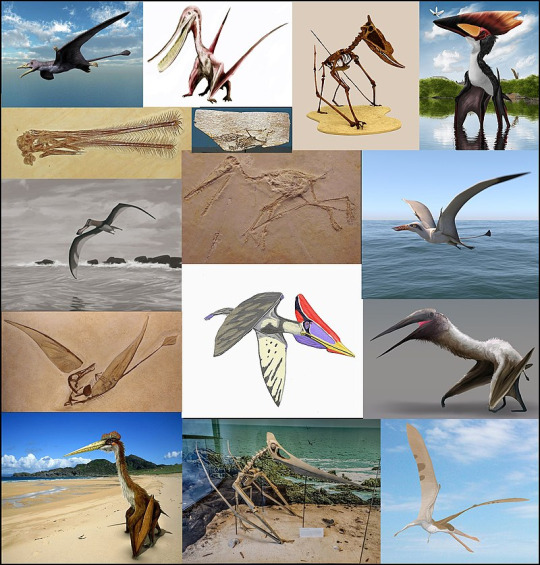
Also commonly called "pterodactyls" even though that's... wrong; this is the classical group known as Flying Reptiles, and the next group to branch from the Avemetatarsalia tree! Evolving from thin, lithe, agile floofins - things like Scleromochlus and Lagerpetids - these animals extended their fourth finger extremely long, attaching a membrane of skin and muscle to that dramatically lengthened finger and down to the ankles. Early forms had long tails, with later forms shortening the tails to smaller nubbins. These were the FIRST vertebrates to evolve powered flight. Early forms were fairly generic, but over time they diversified extensively - having diamond tail ends, interlocking long thin teeth in their jaws for catching fish; others grew bristle like teeth for filter feeding small invertebrates; some grew huge bodies, with crests and display structures on their heads like Pteranodon. The Azhdarchids, huge forms that had long necks and giant heads, were some of the most successful members of this group, becoming apex predators in many ecosystems - and no wonder, given they were the largest flying animals ever and stood as tall as giraffes. In general, pterosaurs walked on four limbs, folding up their wings at their sides in order to do so. They first appeared in the Triassic, and, alas, went extinct during the end-Cretaceous extinction. This group is so diverse and fascinating that I could go on forever, so I will leave it here - but feel free to dive into their extensive wikipedia pages!
DINOSAURS

We now move on to Dinosaurs and their closest relatives, the rest of the Avemetatarsalians. We define Dinosauria as the group composed of the two branches of the family - Ornithischians and Saurischians - usually phrased as the Most Recent Common Ancestor of Megalosaurus (a Saurischian) and Iguanodon (an Ornithischian) and all of that ancestor's descendants. Everything from here until the end of our trip through Archosaurs is a dinosaur - including every. single. bird. However, *nothing* outside of these paragraphs are dinosaurs! Dinosaurs are a single group of extremely successful reptiles, unique from all these other reptile groups - and all these other reptile groups are unique from dinosaurs. The main feature dinosaurs have in common? A completely open hip socket, allowing for limbs to be placed directly underneath the body, making dinosaurs very different in locomotion and posture than living nonavian reptiles, and very similar to their living members the birds. Early relatives showcase this evolution from semi-sprawling archosaurs to fully upright dinosaurs. Dinosaurs first appeared in the middle Triassic, though they weren't common until the Late. All the early forms were pretty much the same - small, bipedal animals, with long necks and tails, and fluffy bodies.
Ornithischians
The first main group of dinosaurs are the Ornithischians, which are united in having a small beak in the front of the jaws, called a predentary. It is possible that Silesaurids, once thought to be early Dinosaur relatives - quadrupedal lanky herbivores from the Triassic - fall in this group. All Ornithischians were primarily herbivores. Most of them were small, bipedal herbivores, but four main groups showed up over time: Stegosaurs, Ankylosaurs, Marginocephalians, and Ornithopods. Among the miscellaneous dinosaurs outside of those four groups, however, were interesting weirdos - the toothy and small Heterodontosaurs; the burrowing and armored Thescelosaurs; and, of course, the fluffy Kulindadromeus.
Stegosaurs
Stegosaurs were huge, quadrupedal herbivores with plates and spikes on their backs, necks, and tails. The plates were primarily for display and communication, while the spikes were for both display and self defense. They had very small heads, too, giving them a weird appearance. Alas, Stegosaurs lived mainly in the Jurassic, going extinct in the early Cretaceous... probably. Jury's still out based on some fragmentary fossils and tracks.
Ankylosaurs
Ankylosaurs, cousins of Stegosaurs, lived through to the end of the Cretaceous. They were heavily armored dinosaurs, with non-overlapping osteoderm scutes all over their backs and necks and heads. Many had spikes on the sides of their bodies, while other forms grew strengthened tails with clubs at the end for fighting each other. Still others grew weird sharp tail ends, formed from scutes creating a flat surface at the end of a stubby tail. They were not just like turtles, with the scutes evolving from scales rather than a shell evolving from the ribs. In fact, often times the scutes formed distinct rows along the body, not even really touching. There were tons of these dinosaurs throughout the Jurassic and Cretaceous, only going extinct in the end-Cretaceous extinction.
Marginocephalians
Marginocephalians included both Pachycephalosaurs - the dome-headed dinosaurs - and Ceratopsians, the horned and frilled dinosaurs. Pachycephalosaurs were bipedal animals, with huge domed heads and extremely strengthened tails - allowing them to butt heads and fight each other much like rams today. Ceratopsians had frills on the back of their heads - though in early forms it was very small, like Psittacosaurus - that evolved into large crests for display. Many grew horns on the side of these crests, while others grew huge horns on their faces in a variety of patterns. These horns were great for defense, but primarily served for communication and display, because some - like the curved downward horn of Einiosaurus - weren't really built for defense. Pachycephalosaurs were rare, but Ceratopsians were some of the most common dinosaurs around the world, with both groups only going extinct in the end-Cretaceous extinction.
Ornithopods
Finally, Ornithopods! Ornithopods were cousins of Marginocephalians, much as Ankylosaurs and Stegosaurs were more closely related to each other earlier. Some forms from the southern hemisphere (known as Elasmarians) were weirdly diverse, with lots of different forms from stocky and armored to small and lithe. Rhabdodonts had ridiculously complex teeth for efficient foraging, with some forms being more quadrupedal and others more bipedal. Some of the Ornithopods, Dryosaurids, evolved into extremely fast reptiles, adapted for running quickly away from predators with elongate, lean bodies. The second dinosaur ever described, Iguanodon, is from the Ornithopod group, with huge spike claws on their thumbs. Others, like Ouranosaurus, grew huge sails on their backs. While in the Jurassic and Early Cretaceous these animals were well adapted for feeding on dry hard plants, as the world grew more wet in the Late Cretaceous, they adapted to be able to chew on soft mushy plants. This huge group of Ornithopods - the Hadrosaurs- were extremely social animals, living in large herds with complex nesting sites. Some forms even grew huge crests on their heads, connected to their nostrils and lungs - allowing them to blow air through the crests, creating different sounds like brass instruments! What's really weird is that to chew that soft plant material, they grew thousands and thousands of teeth, which formed a single serrated surface for chewing. They also had weirdly long heads, superficially similar to horses; and hooves on their front feet! These diverse dinosaurs also only went extinct due to the end-Cretaceous extinction.
Saurischians
The other branch of the dinosaur family tree were the Saurischians - animals with hollow bones and lungs much like living birds, and it is from this group that birds would evolve. They come in two main flavors: Sauropodomorphs, and Theropods.
Sauropodomorphs
This is where all of the "long-necked" dinosaurs go, as well as their early relatives. In the Triassic, most of these animals were "prosauropods" - an artificial group of dinosaurs that were very successful, and from which proper Sauropods would evolve. Originally small bipedal omnivores, over time Sauropodomorphs grew longer necks, quadrupedal stances, and bulky bodies. The earliest Sauropods appeared in the Triassic, with four pillar like legs and huge torsos. Over time, a variety of different Sauropod groups would evolve. The Mamenchisaurs of Asia had the longest necks of any animal ever - reaching enormous sizes. The stocky Turiasaurs of Europe, North America, and Africa had short stocky necks and sturdy bodies. Diplodocoids included classic dinosaurs such as Apatosaurus/Brontosaurus and Diplodocus, but also weird squished forms like Brachytrachelopan, sailed ones like Rebbachisaurus, super grazers like Nigersaurus, and the weird spine-neck having Bajadasaurus. However, most sauropods fall into the group Macronaria. These were bulky dinosaurs, but evolved into some of the tallest animals ever in Brachiosaurus and Sauroposeidon. And, from this group evolved the Titanosaurs: The Largest Land Animals Ever. These were the dominant sauropods for the Cretaceous period, and were found on every continent around the world. Some grew to enormous sizes, while others were smaller; some grew armor on their backs, while others weirdly curled their tails into a spiral. Some had humps on their backs, others lost all their toe claws for maximum front limb pillar supportive action. While all other Sauropod groups had gone extinct by this point, Titanosaurs were extremely diverse and common right until the end-Cretaceous extinction.
Theropods

All remaining dinosaurs fall into this group, the Theropods. These were all bipedal animals, and where feathers were regularly retained (other dinosaur groups usually lost their feathers as they grew bigger). Early members, like Coelophysis, had long thin necks and small heads, and were efficient fast predators in the Triassic - though not the dominant ones by any means (that went to the Pseudosuchians). Over time they grew bulkier and more powerful, with display crests on their heads like in Dilophosaurus (note: it did not have a neck frill, it did not spit poison).
Ceratosaurs
The first big grouping of Theropods to diverge were the Ceratosaurs, which were bulky predators with huge skulls and progressively smaller arms. Many had horns on their heads and armor on their bodies. Some forms remained small and thin, like Masiakasaurus, and even evolved herbivory, like Limusaurus. Others, the Abelisaurs, evolved very long thick bodies - sosig/sausage bodies - and teeny tiny arms for display purposes. They primarily caught and ate other animals with their huge, sturdy, square shaped jaws.
Megalosaurs & Allosauroids
On the line leading to birds, many different types of large predators evolved. Megalosaurs - of which the first named dinosaur, Megalosaurus, is a member - were lean predators with long arms and long heads, found across Europe and North America. One group, the Spinosaurids, evolved to be huge heron like predators, living at or near the water and scooping up fish and other animals - even creating pouches in their mouths to do so. Some evolved huge sails on their backs, presumably for display. Efficient, flexible jawed hypercarnivores - the Allosauroids - appeared in the Jurassic and were some of the largest predatory dinosaurs to ever live, lasting until the mid Cretaceous.
Coelurosaurs
Coelurosaurs contains all the rest of the Theropods, and these were very birdlike animals with more complex feathers and brains more similar to birds. Here we had Megaraptors, huge predators with giant hand claws. They were also very unique in another way. Outside of mammals, terapods are not able to turn their wrists inward, ie, form "bunny hands", rendering the "T. rex" pose that many people do to mimic dinosaurs extremely inaccurate, and all the dinosaurs in Jurassic Park et al have very broken wrists. However, Megaraptors? Could turn their wrists inward. So, I guess everyone was just mimicking Australovenator this whole time, or something.
Tyrannosaurs
Tyrannosaurs were a huge group of Coelurosaurs with a variety of different members - some were small fast bipeds covered in floof with display crests on their heads; while others were bulky predators evolving bigger and bigger heads. The bulkiest known land predator, Tyrannosaurus, was one of the last members of this group. Tyrannosaurs evolved shorter and shorter arms in order to grow stronger, bigger heads - and were some of the most highly adapted carnivores in history. They lived throughout the Northern Hemisphere, and only went extinct thanks to the end-Cretaceous extinction.
Maniraptoriformes
Many different types of small, bipedal floofins evolved in Coelurosaurs - things like Compsognathus, Sinosauropteryx, and Ornitholestes. These animals progressively evolved more feathers on their arms, until finally in Maniraptoriformes we see the appearance of bird-like wings. The "Ostrich Mimics" - even though they came first - Ornithomimosaurs were dinosaurs that essentially looked like modern ostriches but with long, bony tails. These fluffy dinosaurs had simple wings on their arms for display. Some members grew huge and weird - Deinocheirus, the Demon Duck, was a huge herbivore with giant arms and a hump on its back. Evolution is amazing like that. The Alvarezsaurs remained small, and their front limbs shortened until they had a single claw on each wing - allowing them to dig up bugs and other animals from hard to reach places. Therzinosaurs grew to be upright in posture, with huge hand claws and pot bellies, allowing them to digest huge quantities of plants.
Oviraptorosaurs
The Chickenparrots - Oviraptorosaurs - were herbivorous dinosaurs with near-modern wings. They had shortened tails, and long necks, and squat bodies. They lived throughout the Cretaceous and were extremely common. Some members had huge crests on their heads; most of the later members had huge, parrot-like beaks as well. Honestly, Oviraptorosaurs were very weird and charismatic dinosaurs, and mainly ate an omnivorous to herbivorous diet.
Scansoriopterygids
At this point, one of the weirdest dinosaur groups - the Scansoriopterygids - diverged. They didn't live for very long, only found in the Jurassic of China; but they evolved membraneous wings between their fingers, making them - essentially - actual (small) wyverns.
Dromaeosaurs
Dromaeosaurs - "raptor" dinosaurs - are where we see the first signs of flight in dinosaurs, with Microraptor having wings on its arms and legs allowing for a clumsy version of flight. Most members couldn't fly, but they came in a lot of weird shapes and sizes - with some even being semi aquatic and shaped like geese! They had sickle claws on their feet, which were good for stabbing strategically at certain places in their prey, leading to the prey bleeding out. They would hold their prey steady by rapidly flapping their wings, which they could also do to move quickly up steep surfaces. These predators ranged in size from very small to bear sized, though Velociraptor - the most famous one - was only the size of a coyote. All of them - ALL of them - were feathered like living birds.
Troodontids and early Avialae
Their cousins, the Troodontids - which may or may not be closer to birds, we don't know - were also very bird like, but more slender in proportion and with smaller sickle claws. Interestingly, they had some of the largest brains for their bodies among Mesozoic ("nonavian") dinosaurs. Other forms similar to them - may or may not be in a group with them - called Anchisaurids, still retained the leg wings of Microraptor and co. Many of these animals have been preserved with complex, fluffy feathers, similar to living birds. Still similar yet, Archaeopteryx didn't have four wings, but did have fluffy legs and sickle claws on its feet similar to Troodontids and Anchisaurids. One dinosaur, Jeholornis, evolved to eat seeds; while another, Sapeornis, was one of the first dinosaurs to try out a lifestyle similar to living birds of prey.
Enantiornithines
At this point, dinosaurs lost their bony tails and grew shortened, fused tails - the tails of modern birds. They tried out lots of different forms with this - dinosaurs with ribbon tail feathers like Confuciusornis, and then the Opposite Birds, or Enantiornithines. See, living birds have a concave joint location on the coracoid (shoulder bone) and a convex joint on the scapula to link to it; in Enantiornithines, the concave joint is the scapula, and the convex is the coracoid. Enantiornithines were extremely common, with countless forms across the Cretaceous period - some were waders, others were like birds of prey, some even adapted to look like toucans with teeth. Still, all of them went extinct at the end of the Cretaceous.
Euornithes
The line to true birds, with the correct wing articulation, wasn't quite as diverse, but had many members. Many of these animals were adapted for water based life, while others evolved to be large flightless animals. Others were simple tree dwelling birds, living alongside the similar looking Enantiornithines. The closer you get to living birds, the more teeth were lost - and the modern bird beak began to evolve. Still, teeth are found in the closest relatives to modern birds, Ichthyornis and the Hesperornithes. Hesperornithes were a group of Cretaceous dinosaurs that evolved for aquatic life, spending all their time in the water hunting fish - kind of looking like a toothy penguin or loon.
NEORNITHES
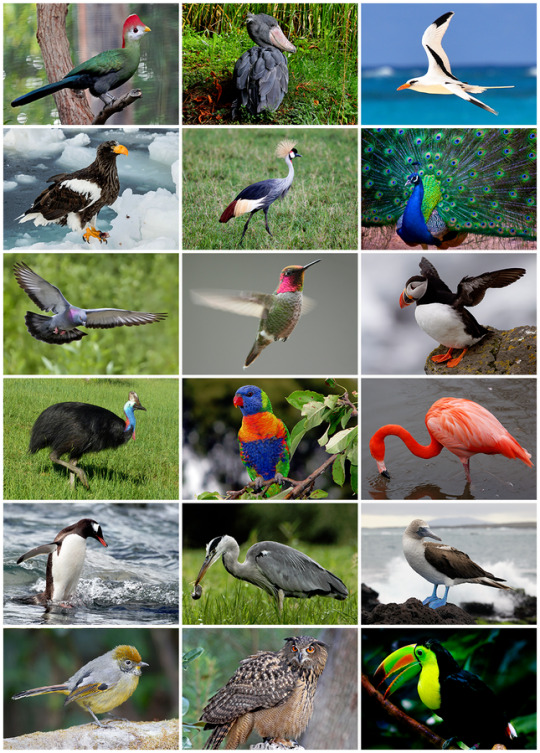
All remaining dinosaurs fall into Neornithes, the least inclusive group that still has all living birds, a derived clade of the Theropods. These were the only dinosaurs to survive the end-Cretaceous extinction. You can literally divide dinosaurs based on that extinction - everyting above this, from the Mesozoic; everything below this, from the Cenozoic. Today, half of all reptiles - over 10,000 species, possibly up to 20,000 - are birds. There is no way for me to go over all birds without losing my mind, so I'm going to summarize them as simply as I can. But these dinosaurs are, as you can see, firmly nested in the dinosaur family tree - there is no way to separate them out. What follows is the world's most efficient description of bird diversity ever.
Palaeognaths
The first major division is between Palaeognaths and Neognaths. Palaeognaths include ratites like Ostriches, Cassowaries, and Emu, but also the flighted Tinamou. It seems that this group evolved flightlessness multiple times, and did not all stem from a flighted ancestor - an extinct group, the Lithornithids, were fully flighted, tree dwelling dinosaurs of the Paleocene and Eocene (right after the end-Cretaceous extinction). Neognaths contains all other birds.
Galloanserans
Neognaths contains Fowl - chickens, ducks, and relatives - and all other birds. The fowl group, Galloanserae, has some of the only Neornithines we have fossils of from the Cretaceous. These animals come in a wide variety of forms - including the extinct, large, flightless Gastornis and Mihirungs. Ducks, Geese, Swans, Screamers, and Magpie-Geese all fall into the Waterfowl side of Galloanserae; while Chickens, Pheasants, Megapodes, Partridges, Grouse, Curassow, Guineafowl, Quail, Guans, and Chachalacas are on the Landfowl side.
One group of birds, the extinct pseudotoothed Pelagornithids, resist classification - it's unclear where they go, but they might actually be closely related to the fowl. These were some of the largest flying birds ever, and had eldritch horror mouths. Birds can't reevolve teeth - they lost the genes for enamel - so instead, some make their tongues sharp, while Pelagornithids just decided to eff up their jaws.
Neoaves
Now, the rest of birds are in Neoaves, which seems to have arisen at the very end of the Cretaceous and diversified extremely rapidly at the start of the Paleocene. This means their evolutionary relationships are a MESS and we don't really know what goes where between here and Telluraves. Different groups of these miscellaneous Neoavians include Mirandornithes (flamingos, grebes, and the extinct giant swimming flamingos), Columbimorphs (pigeons, mesites, and sandgrouse), Otidimorphs (bustards, cuckoos, and maybe turacos), Strisores (hummingbirds, swifts, potoo, frogmouth, nightbirds - the flying specialist clade), Gruiformes (cranes and rails), Charadriiformes (waders, gulls, and auks), Eurypygimorphs (Sunbittern, Kagu, and Tropicbirds), and Aequornithes (water birds). Aequornithes is an extremely diverse group, including loons, penguins, albatross, petrels, storks, boobies, cormorants, herons, ibises, shoebill, hamerkop, and pelicans - as well as an extinct group, the Plotopterids, which were boobies doing their best penguin impression! There's also the Hoatzin, which is a mysterious bird among these mysteriously related birds, that doesn't really go with anything - but man, does it smell.
Telluraves
The rest of birds fall into Telluraves, known as the tree dwelling birds, which evolved from a predatory common ancestor. These include the Accipitrimorphs, which fall into Cathartiformes - Western Hemisphere Vultures, including the Teratorns that went extinct recently - and Accipitriformes, which includes all hawks, eagles, buzzards, Eastern Hemisphere vultures, the Secretarybird, kites, and other diurnal birds of prey that aren't falcons or seriemas. Owls, aka nocturnal birds of prey, form another group in this clade, with many weird extinct forms - including the stilt-owls. Coraciimorphs are a major group of Telluraves, which includes mouse birds, cuckoo roller, trogons, quetzals, hornbills, kingfishers, hoopoe, and woodpeckers - this extremely diverse group of tree dwellers is found worldwide and includes so many weird animals (have y'all seen how the tongue works in woodpeckers? Yeah).
Australaves
Australaves is the last remaining clade, still within Telluraves, and its a group of birds that arose in Australasia. The first group to diverge were the Seriemas and their relatives, which includes all the Terror Birds - one of the most successful predator bird lineages ever, with tons of species that carried on the theropod legacy excellently in South America and then North America, only going extinct due to the ice age. Next to diverge are the falcons and caracacaras, which are very different and separated from the other diurnal birds of prey we discussed above - and also, very cute. Next up? Parrots! Finally! Parrots includes everything from the Kakapo to the Macaw, and had a lot of huge varieties over their evolution.
Passeriformes
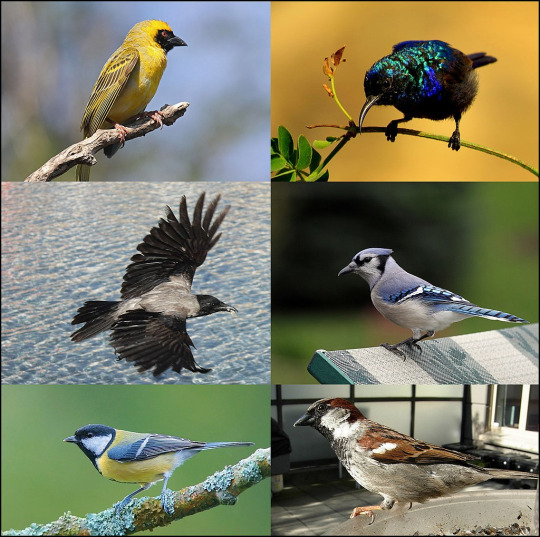
Sister to Parrots, our last bird group, within Australaves, and including HALF of all bird species, are the Passerines - Perching Birds. Literally, there are more species of Passerines - just one group of birds - than there are of all mammals. I'm going to list them now as simply as I can, but just know, there are so many of these, and they are very diverse and very colorful and very weird and they include the second smartest animal on earth after people, the members of the genus Corvus. So, Perching Birds include New Zealand Wrens, Asities, Broadbills, Sapayoa, Pittas, Crescentchests, Gnateaters and Gnatpittas, Antbirds, Antpittas, Tapaculos, Antthrushes, Ovenbirds, Woodcreepers, Manakins, Cotingas (including the Cock of the Rock), Tityras, Tyrant Flycatchers, Scrub-Birds, Lyrebirds, Australian treecreepers, Bowerbirds, Fairywrens, Emu-wrens, Grasswrens, Bristlebirds, Pardalotes, Scrubwrens, Thornbills, Gerygones, Honeyeaters, Pseudo-babblers, Logrunners, Jewel-Babblers, Quail-Thrushes, Cuckooshrikes, Trillers, Whiteheads, Sittellas, Whipbirds, Wattled Ploughbill, Shirketits, Australo-Papuan Bellbirds, Painted Berrypeckers, Vireos, Whistlers, Oriols, Figbirds, Boatbills, Woodswallows, Butcherbirds, Currawongs, Australian Magpie, Berryhunters, Shrikes, Boubous, Tchagras, Bristleheads, Ioras, Wattle-eyes, Batises, Vangas, Fantails, Drongos, Flycatchers, Ifrits, Birds of Paradise, Choughs, Apostlebirds, Melampittas, Jayshrikes, Crows, Ravens, Jays, Satinbirds, Berrypeckers, New Zealand Wattlebirds, Longbills, Stitchbirds, Australian Robins, Rail Babblers, Rockfowl, Rock jumpers, Hyliotas, Fairy Flycatchers, Tits, chickadees, Titmice, Reedlings, Larks, Nicators, Warblers, Crombecs, Cisticolas, Reed Warblers, Grassbirds, Donacobius, Malagasy Warblers, Wren-Babblers, Swallows, Martins, Bulbuls, Babblers, Parrotbills, White-eyes, Laughinthrushes, Fulvettas, Leaf-warblers, Hylias, Bushtits, Scrub Warblers, Bush Warblers, Yellow FLycatchers, Palmchats, Waxwings, Silky Flycatchers, Hylocitrea, Hypocolius, Hawaiian Honeyeaters, Elachura, Dippers, Chats, Thrushes, Oxpeckers, Starlings, Rhabdorns, Mockingbirds, Thrashers, Goldcrests, Kinglets, Wallcreeper, Nuthatches, Treecreepers, Gnatcatchers, Wrens, Sugarbirds, Dapple-Throat, Sunbirds, Flowerpeckers, Leafbirds, Fairy-Bluebirds, Olive Warbler, Przewalski's Finch, Weavers, Indigobirds, Whydahs, Waxbills, Munias, Accentors, Sparrows, Snowfinches, Wagtails, Pipits, Finches, Euphonias, Thrush-Tanagers, Longspurs, Buntings, Cardinals, Mitrospingid Tanagers, regular Tanagers, Yellow Breasted Chat, Grackles, Blackbirds, Orioles, Wrentthrush, a bunch of weird warblers, spindalises, and Hispaniolan Tanagers.
Why the fuck are passerines so diverse, you ask? Apparently their genetic makeup leads to speciation at the drop of a hat. It's wild.
And that, my friends, is all dinosaurs. Everything from the Dinosaur header to now.
Let's go back to the base of Sauria! Take it back now y'all!
LEPIDOSAUROMORPHA
Finally, the other half of the Saurian tree! Lepidosauromorphs, unlike Archosaurs, kept a fully sprawling gait, but had a sliding joint in the shoulder blade chest area to allow for longer strides while moving, and pleurodont teeth - teeth fused to the inner surface of the jaw bone. They also retain the Parietal Eye - a small "third eye" on the top of the head found in earlier reptiles and amphibians - which is not found in Archosaurs or Turtles. Thus, these are extremely unique reptiles - though they superficially look similar to many of the reptile groups we've covered, they have adaptations for more efficient feeding and locomotion. In addition, many Lepidosaurs - including Tuatara and many forms of lizard - have tail autonomy, meaning, they can shed their tail and regrow it in order to elude predators, a feature not found in Archosaurs. This group is the group of Lizards, Snakes, and Tuatara, and all of their extinct relatives - things closer to them than to the Archosaur side of the tree.
Kuehneosaurids
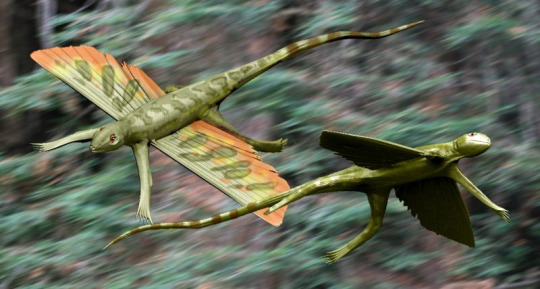
Unlike Archosaurs, Lepidosaurs don't have a lot of varied and diverse extinct relatives - while Archosauromorpha is filled to the brim with weirdos, Lepidosauromorphs only have a few isolated forms showing the evolution to Lepidosaurs, and possibly the Kuehneosaurids. Kuehneosaurids were another experiment in reptilian gliding via rib extinctions, living entirely in the Triassic and completley separate from the Weigeltisaurids from earlier. They were insectivores, with pin like teeth, and very small heads. Some members were capable of gliding, while others were only really good at leaping from branch to branch.
Crown Lepidosaurs are made up of two groups: Rhynchocephalians (Tuatara) and Squamates (lizards and snakes).
Rhynchocephalia
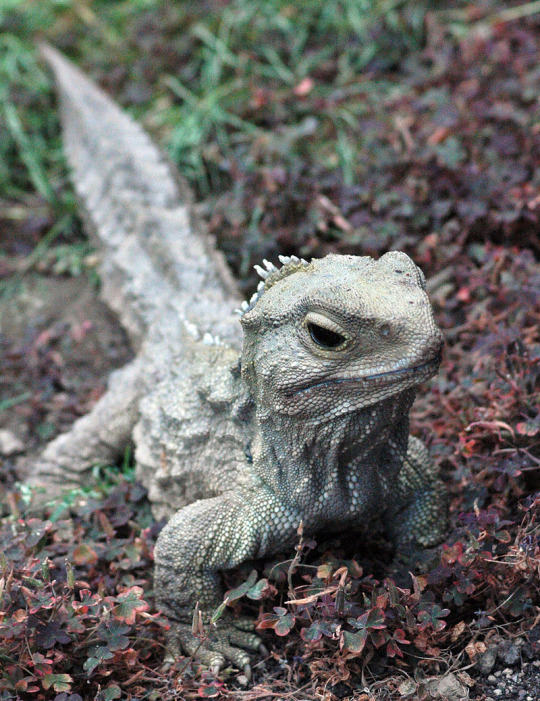
Today, there is only one: the Tuatara. In the past, they were everywhere, extremely common reptiles found around the world, especially in the Triassic and Jurassic. Compeletely separate from lizards, these reptiles had fused skull bones into a bar across the top of each side of the head, and unique teeth for digesting a wide variety of food. While the only living member looks superficially like lizards, extinct species took many forms - including one that had very small legs and a very elongate body for simming through the water (Pleurosaurus). Sapheosaurids had huge broad tooth plates, allowing them to eat hard shelled organisms. Today, the living Tuatara doesn't replace its teeth during its life, leading to a changing diet from childhoood to adulthood, switching from hard prey to softer prey as they age. Today, they are only found in Aotearoa.
Squamates
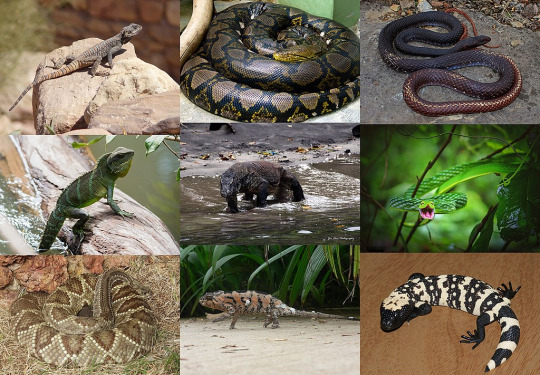
All remaining reptiles - including just as many species as birds - are the Squamates, otherwise known as lizards and snakes. Squamates aren't just generic reptiles, but highly specialized animals with very unique adaptations. They have horny scales all over their body that have to be shed via moulting, and are very differently formed than the scales found in Archelosaurs. They have movable bones in the quadrate, allowing the upper jaw to move independently. In addition, viviparity - giving birth to live young rather than eggs - evolved multiple times in Squamates, across a variety of members. And they varied extensively in size, with extremely small members less than an inch long, to huge marine members that are long extinct.
The first group to diverge are the Dibamids, or Blind Skinks, which are small insectivorous lizards that burrow into the soil. They also lack limbs, but will not be the last lizards to lose their limbs.
Gekkotans
Next up are the Gekkos - small, mainly carnivorous lizards found everywhere but Antarctica. They have a variety of clicking and chirping sounds, unique among lizards, and have loud mating calls. They are usually nocturnal, and many have specialized toe pads, allowing them to grab and climb on smooth and vertical surfaces. There are over a thousand species of Gekkos alone.
Scincomorphs
Next are the Skinks and their close relatives, the Scincomorphs. This has a lot of different forms, including many extinct ones. These lizards have cone shaped heads with very large and symmetrical scales, forming kind of a shield over their bodies. These scales are smooth and glossy. They have dermal armor, as well, and long tapering tails. There are over a thousand species, and many are found in the desertws of Australia and temperate areas of North America. Girdled Lizards, Spinytail Lizards, and Night Lizards all fall into this group along with Skinks.
Lacertoidea
Up next are the Lacertoids, a big group of diverse lizards united by having tile-like scales on their bodies, which form characteristic rings in Amphisbaenians. Members include the Amphisbaenians - aka worm lizards, yet another lizard group that lost their legs - as well as the Wall Lizards (Lacertids), Largescale Lizards (Alopoglossids), Spectacled Lizards (Gymnophthalmids), Whiptails, Racerunners, and Tegus (Teiids). This group also has over a thousand species with a variety of ecologies - and some members even are capable of parthenogenesis! Most Lacertoids are small or medium sized, though Tegus get quite big. They are slender lizards, with long tails, and a wide vareity of colors.
Toxicofera
All remaining squamates - literally all - fall into a single group, the Toxicoferans. As the name suggests, these reptiles have in common the presence of venemous members - species that produce venom and are able to deliver it to prey via biting. In fact, venom seems to have only evolved the once in reptiles: in th ancestor of this group, Toxicofera (see why a venomous Dilophosaurus, a dinosaur very far removed from this group, was ridiculous?). Containing half to sixty percent of all Squamates, Toxicoferans are to Squamates as Passerines are to Birds. There's just SO many of them. We used to not know about this group, because they don't have morphological similarities other than the venom - but thanks to genetic studies, we have been able to recover it with genomic phylogenetics. Evolution sure is fun! They first appeared in the Late Triassic, meaning all these other lizard groups diverged rapidly during that period. Toxicoferans have two main groups: Iguanians with Anguimorphs, and Snakes.
Anguimorphs
Anguimorphs include a lot of different varied lizards, such as beaded lizards, Gila Monster, Knob-Scaled Lizards, Galliwasps, American Legless Lizards, Glass Lizards, Alligator Lizards, Crocodile Lizards, and Monitor Lizards. As such, it includes the largest living lizard species, the Komodo Dragon! These reptiles can have limbs or be limbless, can have long tails or short tails, can give birth to live young, feed on insects, be hypercarnivores, be semiaquatic, or even have well developed limbs for climbing. There were also many extinct forms of this group, which were venomous and often very dangerous predators in their Mesozoic environments.
Polyglyphanodontians
A completely extinct group of lizards, these reptiles were relatives of Iguanians and were the dominant type of lizard across North America and Asia during the Cretaceous and earliest Paleogene. Many had large, blunt teeth for crushing food; others were specialized herbivores with iguana like teeth; and yet others had blade like teeth for shearing plants. Most went extinct at the end-Cretaceous, with only one form surviving into the Cenozoic and going extinct in the Eocene.
Iguanians
Iguanians, the remainder of the non-snake lizards, includes two thousand species of Iguanas, Chameleons, Anoles, Phrynosomatids, Agamids, and more - such as Collared Lizards, Leopard Lizards, Helmet Lizards, Curly-Tailed Lizards, Spiny Lizards, Swift Lizards, and Tree Lizards. Most are arboreal, but many are terrestrial. They have non-prehensile tongues, which are extremely unique and modified in Chameleons. Most are found in the Western Hemisphere, though many are found on islands around the world.
Mosasaurs
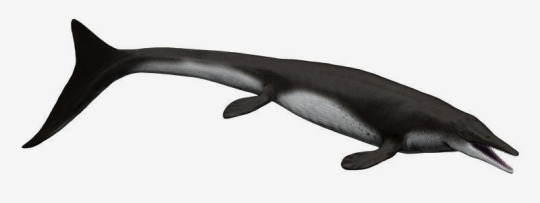
A group of large marine lizards, closely related to snakes (which we will visit next), these huge predators were a fixture of the Late Cretaceous seas, before going extinct during the end-Cretaceous extinction. These reptiles over time turned their legs into flippers, and developed fins on their tails, completely adapting for aquatic life. They had bodies similar to living monitor lizards, but elongated and streamlined for swimming. They would swim through the water with strong tail propulsions, similar to sharks and ichthyosaurs. They probably would rapidly pounce on prey, swimming extremely fast to catch them by surprise. Many were adapted for eating on shelly hard prey, while others were more adapted for feeding on fish and other vertebrates (such as other marine reptiles). They had double hinged jaws and flexible skulls allowing them to swallow huge prey whole. They gave birth to live young, and had a lot of similar adaptations for marine life to living cetaceans - kind of making them the lizard version of whales, especially given they were warm blooded. They had diamond shaped scales over their body, similar to their living relatives, the snakes.
Ophidians
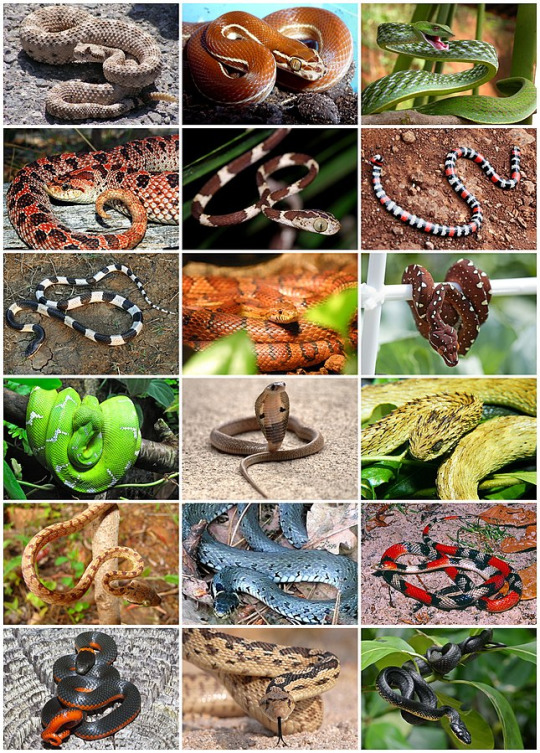
Snakes and their relatives, Ophidians, are our last group of Squamates. Firmly nested in the group, more closely related to some lizards (Iguanians and Anguimorphs) than to others, this makes snakes - by every definition - a kind of lizard. This bothers a lot of people, but there's no way around it: Snakes are highly adapted lizards. They had many extinct relatives, where all living snakes are in the group Serpentes. Early relatives, such as Lapparentophiids and Simoliophiids, show the evolution of snakes from their lizard ancestors. Some indicators show that snakes may have originally been marine - which explains the whole "Mosasaurs are closest to snakes" thing, at least somewhat. Some early fossils even showcase the reduction of the limbs, which would be lost entirely in proper snakes. However, most researchers think snakes certainly started out as burrowers, with an early relative Najash in the Cretaceous being a terrestrial burrowing animal and the even earlier Tetrapodophis also showing adpatations for burrowing life. Snakes first arose in the Cretaceous, and exploded in diversity during the Cenozoic. The puzzle of snake and mosasaur evolution is one that many scientists are actively working to solve - did snakes start as burrowers, or swimmers?
Madtsoiids
One group of snakes, the Madtsoiids, evolved in the Late Cretaceous and persisted up until the Pleistocene - so very recently - in Australia. Including some of the longest snakes known, they were either just outside the group of living snakes or the first group of them to split out (or maybe they aren't a natural group, but this post is already too long so I'll leave that there). They didn't have the highly mobile jaws of living snakes, so they couldn't swallow large prey, but they did have strong trunks to allow them to squeeze their prey like living boids. If this is a natural group, they only went extinct probably due to the climate change of the Pleistocene, or maybe due to human activity.
Scolecophidians
The nexzt group to diverge are blind and thread snakes, which definitely bolsters the burrowing idea, as many of these snakes have extremely reduced eyes and spend their lives burrowing in the ground. These snakes only use one lung and one oviduct, presumably to make themselves more streamlined and efficient for burrowing life. They do sometimes come up after rain, which is usually the only time you can see them - they do this to escape flooding in their burrows. These are small snakes, found across the world.
Amerophidians
Amerophidians, which is a very small group of unique snakes, includes the American Pipe Snake, Dwarf Boas, and Thunder Snakes. Most members of this group aren't venemous. They have very striking color patterns and are found in South and Central America. Some species are arboreal, while others mainly spend their time burrowing underground. The American Pipe Snake especially eats a very wide variety of other animals, including Caecilians, Amphisbaenids, other snakes, fish, and frogs.
Uropeltoids
This next group of snakes includes shield tailed snakes, earth snakes, pipe and cylinder snakes, and dwarf pipe snakes. These snakes are also burrowers, ranging across South and Southeast Asia. They are nonvenemous, and have distinctive patterns on their bodies. These are some of the most enigmatic snakes, with many poorly understood by researchers. They eat a variety of food, including small invertebrates as well as other snakes and vertebrates.
Pythonoids
Pythons and snakes closer to pythons than to Boas or Caenophidians are what we find in this group, though it's unclear how they're related to those two other groups (the three of them together make up most snakes). Pythons are nonvenomous snakes, suffocating their prey to kill it, and are found across Africa Asia and Australia (with invasive forms in Florida thanks to pet release and one species just native to Mexico). They are ambush predators, hiding to strike prey by surprise. Many forms have very iridescent scales, and some species do burrow and spend most of their time underground before coming up to hunt for frogs and small mammals. They reproduce with eggs.
Booids
Boas, anacondas, tree boas, and their relatives fall into this group, which are extremely common snakes in the Americas and also found in other continents around thew orld. They also, interestingly, have vestigial hindlimbs, that are spurs near the vent region. They, like pythons, kill their prey with Constriction, but can eat prey up to the size of tapirs - even swallowing prey whole, taking weeks to fully digest. They don't crush their prey to death, but rather kill them with suffocation. Unlike pythons, most booids give birth to live young.
Caenophidians
This is our last reptile group, and it includes 80% of all living snake species - basically every snake not previously mentioned. As such, this includes file snakes, racer snakes, odd-scaled snakes, snail-eaters, vipers, water snakes, mudsnakes, cobras, coral snakes, sea snakes, mole snakes, sand snakes, shovel-snouts, burrowing asps, stiletto snakes, hognose snakes, ratsnakes, and so many more. Venemous snakes - like vipers and cobras, including rattlesnakes - are in this group, but not all members are venemous. These snakes are found all around the world, and feed on a wide variety of prey items, including other snakes and lizards.
And those are the reptiles. So many weird extinct forms, so many diverse living ones, the age of reptiles did not end with the Mesozoic - instead, it adapted into the wonderful forms we see today.
I hope you enjoyed this, as long as it was, and thanks for reading!
#reptiles#lizards#dinosaurs#birds#turtles#snakes#crocodilians#tuatara#pterosaurs#plesiosaurs#ichthyosaurs#parareptiles#prehistoric life#repblr#sciblr#palaeoblr#birblr
1K notes
·
View notes
Text
INITIAL THOUGHTS ON ARCANE SEASON 2 ACT 1 (EPISODES 1-3)
(i’m not good at putting my thoughts into words so feel free to give your own opinions, i rlly wanna hear them)
SPOILERS AHEAD///
ok so my biggest critique is the pacing. everything is very quick very fast and a lot is going on. i understand that this is immediately after a large event which of course caused a reaction however it was just very intense and a lot to keep up with especially considering the amount of new and confusing things introduced throughout the three episodes with minimal slow down. it was alittle difficult to keep up. the timeline of the show is confusing and i have no idea how long it has been between scenes. viktor was barely in that weird healing chamber for a few scenes before he was emerging as someone new. caitlyn and vi were going from loving to fighting to understanding to fighting again very quickly with little time to develop independently, their kiss and divorce weren’t even 30 minutes apart from each other. also, who the fuck is this kid hanging around with jinx?? why is she following her, why doesn’t she talk, what’s her name, how long has she been with her?? this lack of time to let things develop has caused these episodes to feel rushed.
with this introduction of many new things some have left me with a lot of questions. my biggest issue revolves around the arcane. i literally do not recall it being mentioned or being an important topic in s1 but all of a sudden jayce knows a fuck ton about it as well as heimerdinger? when did he learn this? i assume it’s from viktors notes and research but that still fails to cover the amount of knowledge jayce now possesses.
HOWEVER THE ARCANE IS VERY COOL AND IM VERY VERY INVESTED. i absolutely love the changes to viktor, his weird apathy and changes are definitely rushed but so interesting to see, his design and behaviour are so very compelling and im very excited to see the development. additionally, this group dynamic between jayce, ekko and heimerdinger is soooooo fun. it offers a break from the intensity with some silliness i think is desperately needed, plus it’s super satisfying to see the trio bounce off each other. that final scene of them in ep3 was visually incredible and i loved seeing the effects upon the hextech weapons during the jinx, sevika vs vi, caitlyn fight. the scene of viktor amongst the shimmer infected was very interesting and it was so cool to truly see the severe effects of shimmer and the inhumanity of viktor is making a clear route towards his glorious evolution which is am keen to watch.
that ambessa reveal at the end was INCREDIBLE. i genuinely didn’t see it coming and it made my jaw DROP. the quiet, smart suspicion from mel is always incredible to see, her political mind and morals conflicting is so very engaging and she’s really developing into herself in these episodes which was a joy to witness. the mystery of her brother is compelling and links well through s1 and s2 to make the storyline fun to follow. i also simply must compliment the designs revolving around the noxians and animal-esque (sorry idk what they’re called) people. the absolute variety and inspiration from real life cultures is beautiful to see. i am incredibly confused about the magic and that one lady (amara?) but i assume that’ll be answered in later episodes.
jinx is not looking good lmao. i love her design being so corpse-like and deathly, it really fits well and really embraces the differences between powder and jinx. but i do wish we saw more of her. i see her actions but i lack understanding for some of them, primarily revolving around the child (isha?) and why the kids even there but the newfound bond between sevika and jinx is refreshing to see. the scene of them in silcos old office brought a smile to my face and the design of that fucking arm is soooo cool i love the clownish purely jinx vibe to it.
caitlyn is probably the stand out character so far (plus maybe viktor). her absolute grief and seeing her facade break down throughout the episodes was heartbreaking, the tentative yet conflicting moments of softness with vi were beautiful yet had that perfect undercurrent of tragedy that arcane masters so well. her rage and break up with vi was easy to see coming yet so incredibly jarring to watch, that harsh and merciless behaviour is so different from s1, the development is well done and a morbid pleasure to see. and that final episode. oh my. the shock to acceptance of darkness was fantastic, ambessa truly is a master at manipulating weakness in even the strongest of people and seeing this duo is going to be so soul crushing that i’m itching for more.
vi felt very rushed to me and alittle dry? idk why tho i can’t really explain it. i understand her choices but it felt like something was missing until that final scene with cait. that was an absolute masterpiece. seeing her realising that the horrors of war is corrupting everyone around her and pleading for it to please not happen is so so SO fucking sad and my heart was breaking. i loved seeing her moral strength and solidity to her values which has always been a key part of her character so i appreciate the consistency. idk why something about her was just… different.
the opening scene was incredible. the absolute horror of it was so clear and i was literally shaking the entire time. 10/10 opening.
overall, i hope things slow down alittle but i greatly enjoyed season 2 and im very excited to see the characters develop and to see even more of this beautiful world.
#arcane#arcane s2#arcane season 2#jinx#vi#viktor#ekko#caitlyn kiramman#mel medarda#ambessa medarda#jayce talis#caitvi#jayvik#i haven’t slept#it’s 10am#this prolly makes no sense#people share your#opinions#below#i’d love to read them (:
79 notes
·
View notes
Text
I think it's interesting that - in order to make his "free-thinking Jedi" characters hold any semblance of rationality in their arguments - Dave Filoni needs to resort to artificially dehumanizing the other Jedi and painting them all with the same "we dogmatically worship protocol" brush.
He does this with Huyang in the recent Ahsoka episode.

"Lolz he's so narrow-minded, preachy and by-the-book, unable to think outside the box, just like the Jedi in the Prequels."
My first reaction was being amused at the fact that Filoni had to resort to making the Jedi Order's ideals and rules be embodied by a literal machine for his anti-Jedi headcanon to start making sense.
But then I remembered: Huyang isn't just any droid.
In The Clone Wars, he had a sassy personality, he had a pep in his step, he had a sense of humor...

This character was human in his behavior, he was fun and whimsical.
But now he's been reduced to, I dunno, "Jedi C-3PO"? Basically?
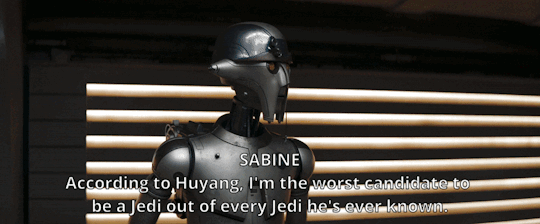
"Ha! He's blunt and unsympathetic because he's a droid, but it's funny because the Jedi were the same, they were training themselves to be tactless, emotionless droids."
And Filoni does this with Mace Windu too, in Tales of the Jedi.
Mace, who brought a lightsaber to the throat of a planetary leader to defend the endangered Zillo Beast...

... and who went waaay past his mandate by mischievously sneaking around Bardottan authorities and breaking into the Queen's quarters because he felt something bad was afoot...
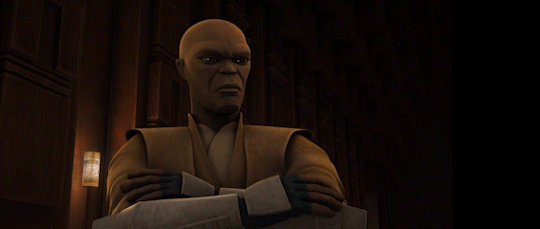
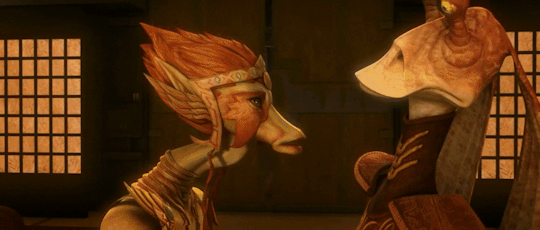
... was reduced to being an almost droid-like, rule-parotting, protocol purist who sticks to his instructions (and is implied to be willing to let a murder go unsolved so he can get a promotion).
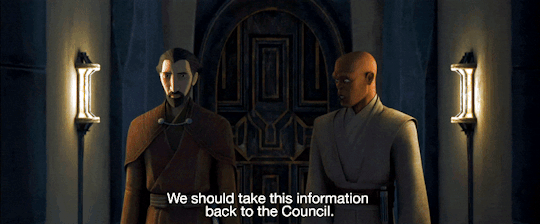
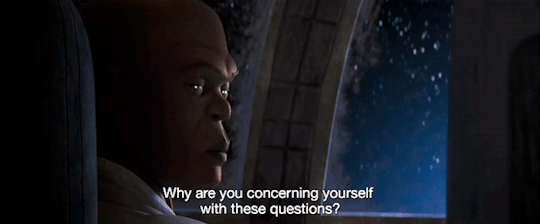

I mentioned this at the end of my first post on Luke in The Last Jedi... while changes in personality do happen overtime and can be explained in-universe... if you don't show us that progression and evolution and just leave us without that context, that'll break the suspension of disbelief, for your audience.
Here, we have two characters with a different (almost caricatural) personality than the one they were originally shown to have.

Now... we could resort to headcanons, to make it all fit together.
We could justify Huyang's tone shift 'cause "Order 66 changed him". And we could make explanations about TotJ's Mace:
Being younger and thus more ambitious and a stickler for the rules, and only really becoming more flexible after getting his seat on the Council and gaining more maturity.
Being such a teacher's pet in the episode because we're seeing him through the eyes of a notorious unreliable narrator, Dooku.
There'd be nothing wrong with opting to go with either of those headcanons to cope with this. After all, Star Wars is meant to help you get creative.
But the problem I encounter is that:
Filoni has an anti-Jedi bias, so the above headcanons clearly wouldn't really track with his intended narrative.
We'd be jumping through hoops to extrapolate and fill in what is, essentially, inconsistent characterization, manufactured to make Ahsoka and Dooku shine under a better light.
And that sours whatever headcanon I come up with.
Edit: Also, yeah, as folks have been saying in the tags... wtf is "Jedi protocol"? The term isn't ever mentioned in the movies, I skimmed through dialog transcripts of TCW, never saw it there.
So it's almost as if - if Filoni wasn't draining characters like Mace and Huyang of all humanity and nuance - his point about "the Jedi were too detached and lost their way, but not free-thinkers like Qui-Gon, Dooku and Ahsoka" wouldn't really hold much water.
#I *will* acknowledge that part of this may also be that in a cartoon like TCW - characters with no moving facial features like Huyang...#... had to be more expressive in other ways; hence why he's so active in the cartoon; which may not translate well to live action.#Then again- look at how expressive and emotive that Hondo Ohnaka animatronic is at Galaxy's Edge.#And the fact remains that he went from a whimsical Mr. Ollivander type figure to... a droid with data on the Jedi...#... all so Ahsoka would seem more human and grounded by contrast#ahsoka series#ahsoka spoilers#ahsoka show#star wars ahsoka#huyang#tales of the jedi#totj#dooku#mace windu#ahsoka tano#star wars#dave filoni#disney plus
617 notes
·
View notes
Text
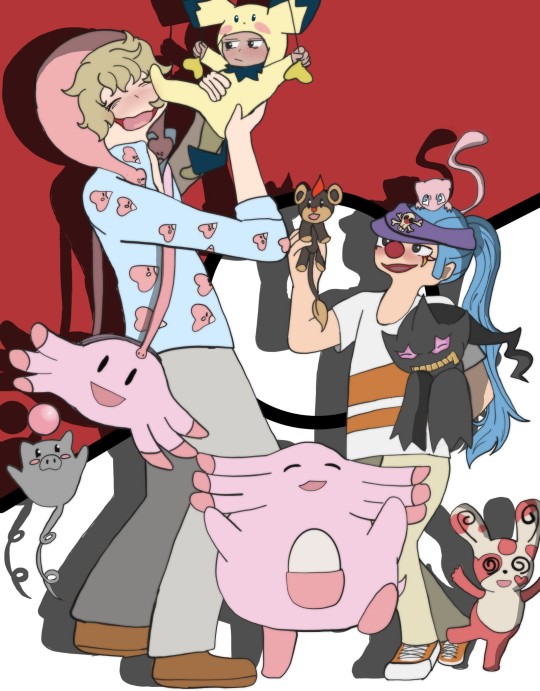

What do you get when you mix one piece with pokemon?
I've always liked the pokemon couple poses that trainers had so being able to use on made me really happy.
They are on vacation and are happily married no i don't hear suggestions.
Apart of course imagining what pokemon teams Buggy and Corazon would have which was also fun.
I did look for a few ideas for reference but they didn't convince totally so here's my take.
Prismarina it was his first pokemon, a gift from the Rogers they got along like a house on fire and now older are both a pair of drama queens.
Buggy:
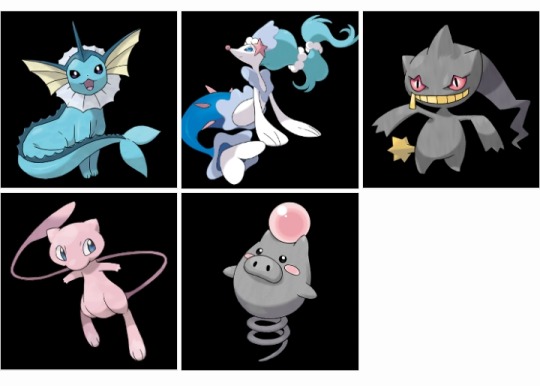
Spoink, have you ever noticed how dark his Pokedex entry is? (Of he stops jumping he does) Anyway he likes shiny things and him and Buggy may have more than one dispute about the shiniest pearls and doing tricks but who doesn't.
Banette because Buggy is incredible petty and Banettes eat negative emotions, Buggy is basically a five star meal most of the time, there's also the thing that they are always searching for there missing child the one that abandoned them (they kind of wants vengeance but shush) and it kind of reminded me of Buggy and Shanks, the bittersweetness of loving someone, longing for someone and hating them at the exact same time. He is particularly mischievous and alongside mew are a flashy combinations beware when you see them together because pranks and disaster follow.
Vaporeon, looks like a clown and just feels right, she enjoys doing tricks a lot to, it's also a contrast to Rosinante Leafeon.
Mew, yes he has a legendary Pokemon, does he know that? Nope, no idea, it's just the flying rat that has been following him since he was young, Mew finds him very amusing and fun sadly she isn't much help when it comes to danger because she thinks it's all a joke, she is however pretty overprotective of Buggy when it comes to the water though at least once she understood it dangerous for him, of course for this he nearly drowned one to many times but who is counting.
Chansey which he meet after his father death, she gave one look to the small traumatized, underfeed child and said mine, she has a lot of work with how clumsy Corazón gets but she wouldn't change her trainer for the world.
Richi also exist in this universe as a male alpha Pyroar, alpha pokemon tend to be bigger than normal pokemon and Richie is really large. Though he isn't in Buggy team, he is Mohji pokemon.

Corazón pokemon consist of:
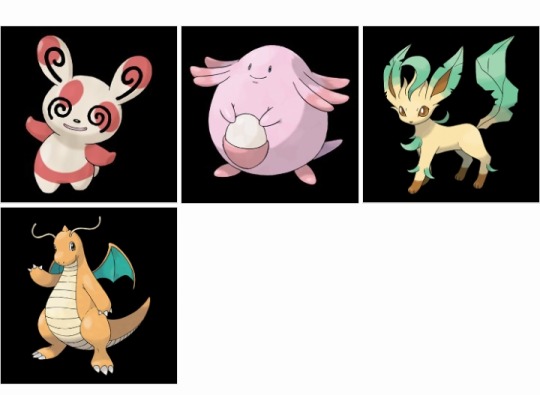
Spinda he saw Corazón tumbling one time and he was just like a brother from another mother, they tend to tumble around together even if Corazon tumbling is more involuntary thanks to his clumsiness.
Leafeon has suffered more than one accidental burn but not thanks to Corazon it's mostly because he tries to turn of the fire he creates though and he ends up crisped in the process.
Dragonite they have been together since he saw the little Dratini and decided to take it with him, he is very peaceful and caring.
No Corazon doesn't have a Luvdisc regardless of how many he has in his clothes.

Talking about pokemon got me curious about what pokemon other though fitted them so if you have any ideas feel free to share them :D
The doll that Buggy is holding is a litleo the pre evolution of Pyroar.
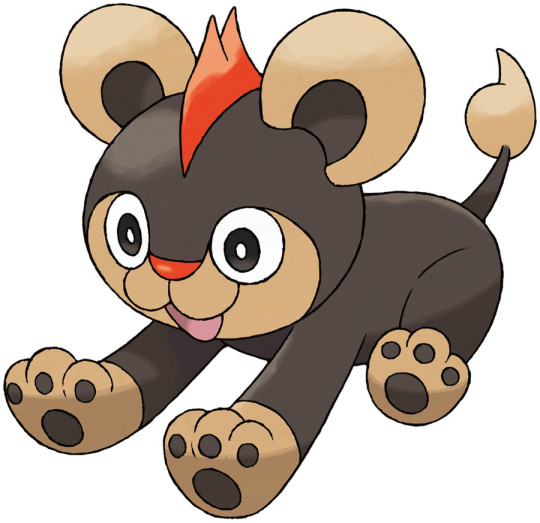
And the pokemon that Law is grabbing even if you only see the ends is Drifloon. They kidnap kids apparently seem familiar (I am looking at you Rosi)

Anyway have a good day :3
#buggy the clown#corabug#one piece#one piece fanart#one piece rosinante#rosinante corazon#one piece buggy#law one piece#trafalgar law#pokemon
101 notes
·
View notes
Text
One of my favorite fun historical through lines is that the original co-illustrator for Dick and Jane who also co-created the branding for Elmers Glue is also very likely the indirect but influential progenitor of a great majority of furry art and culture. and he doesn't even have a wikipedia page. The story is as follows:
A team of designers create Elsie the cow as the mascot of the Borden dairy company, later giving her a husband named Elmer in branding. Elsie was extraordinarily popular and was portrayed in tons of print advertising and even licensed media. The most well-remembered and beloved of these advertisements were done by a popularly unknown and uncredited illustrator named Keith Ward together with a great deal of other commercial illustrations
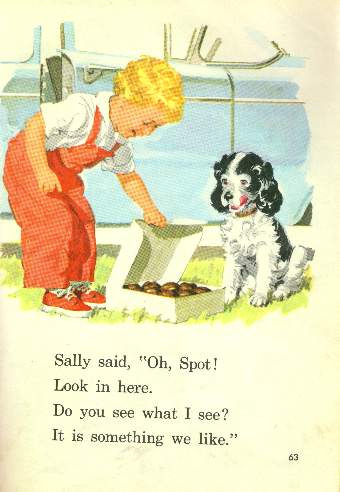
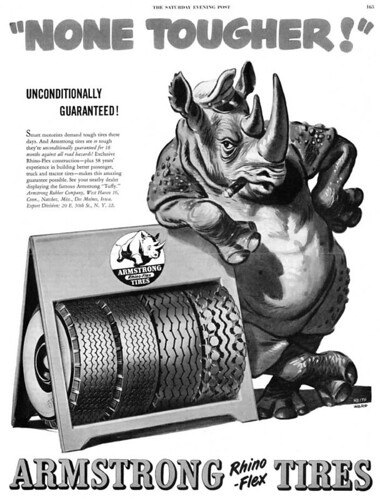
(Ward's early work in commercial illustration: children's books and advertising)
The scale of ward's contribution to Elsie and Elmer is somewhat murky, particularly since most credits go to the contributors with greater status at Borden. Personally, I see it as largely a collaboration between Ward and several unknown others under art director David William Reid.
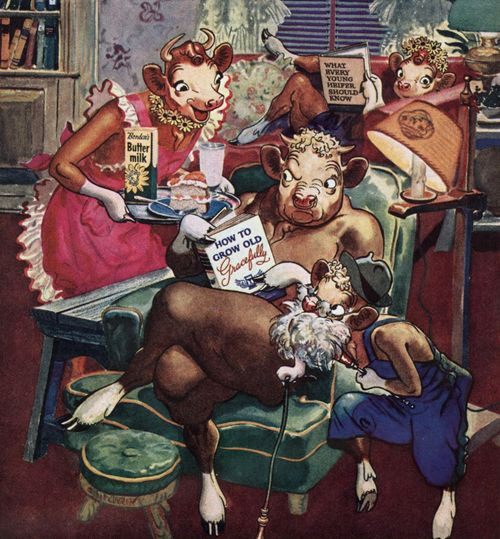
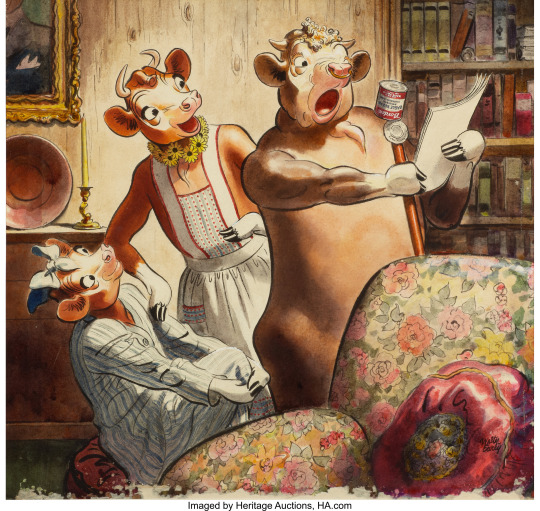
(Ward's work vs Reid's work)
Elsie eventually fell out of popular consciousness after rebranding, but Elmer lives on as the mascot of Elmer's glue, originally a subsidiary of Borden as glue could be produced as a byproduct of industrial dairy. Modern Elmer's glue is synthetic, but retains the iconic mascot and design.
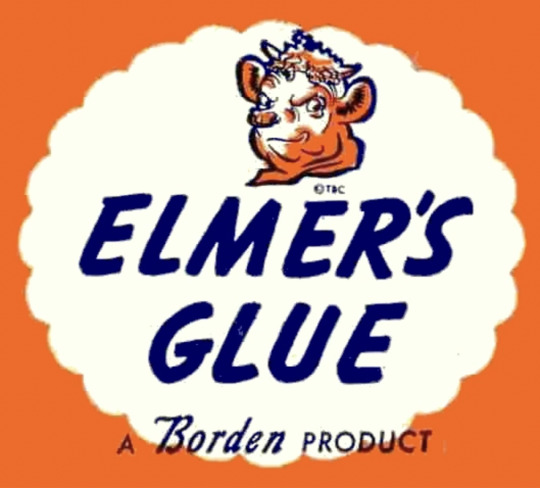
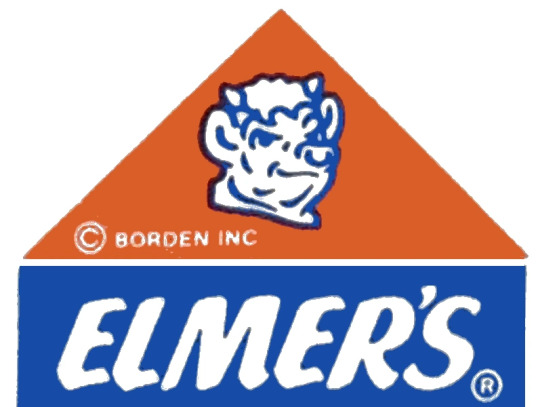

(Elmer's evolution from a more Ward-like design its current iteration)
Ward would later go on to illustrate for an American adaptation of Reynard the Fox by Harry J. Owens, again, miraculously uncredited on the cover. His name appears once, on the title page, and the lavish biography on the back of my copy fails to even mention the illustrations.
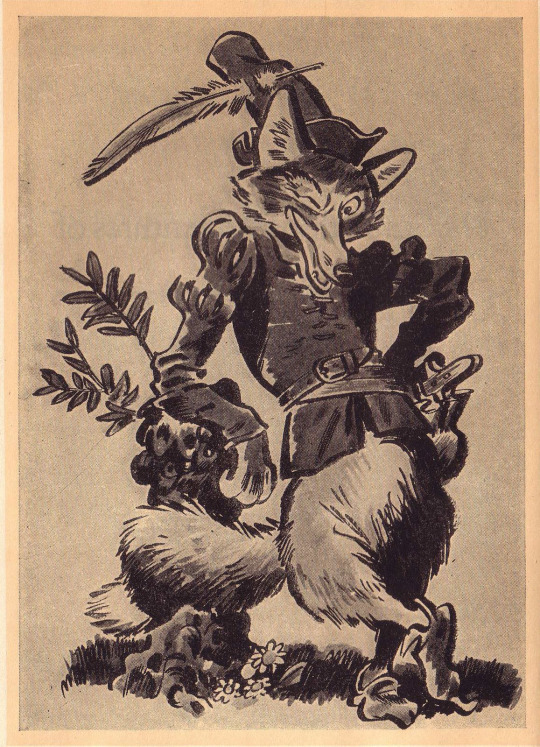
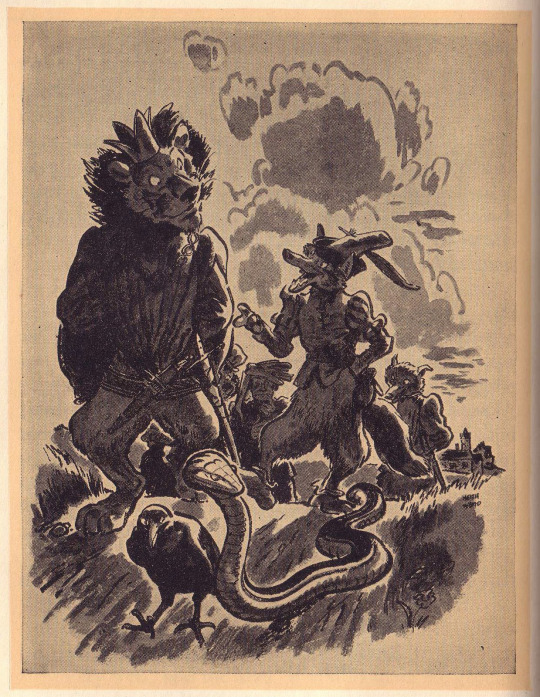
(Ward's work for the Scandalous Adventures of Reynard the Fox)
These works are particularly notable as much later, Ken Anderson of Disney was working on conceptualizing a Disney adaptation of Reynard, which is a very interesting and messy story for another time. In short, he and his team drew many inspirations from many many places, but with Ward being relatively more known and respected in the industry and having worked on a Reynard book in a similar style to what Disney wanted, his work was one of the most influential on the development of the film. The Reynard part was eventually scrapped (those who are familiar with the story and character will not be surprised), but a lot of the designs and even layouts were reused for Robin Hood. If you've ever wondered why they made him a fox, that's why.
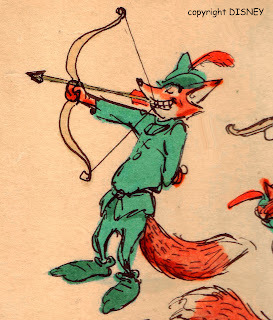
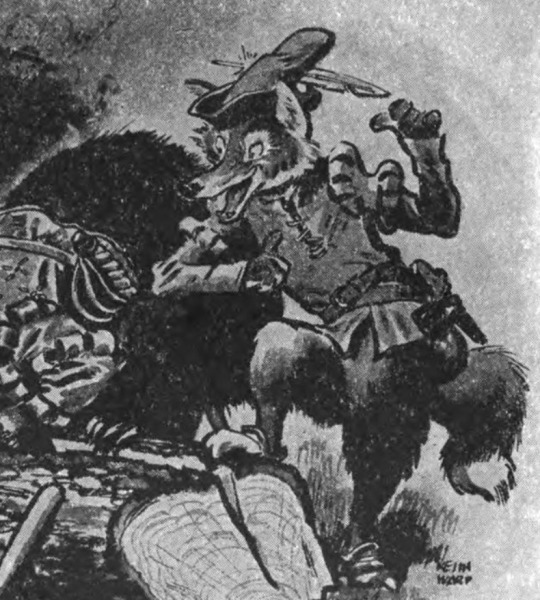
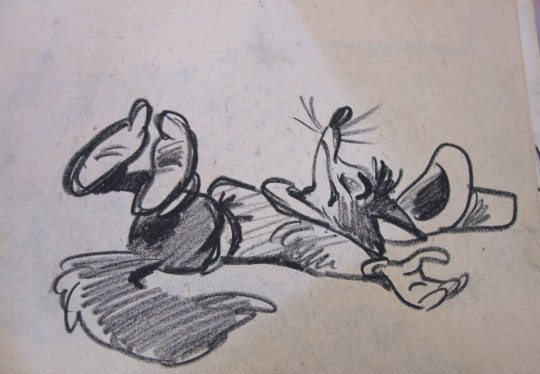
(Bill Peet's and Ken Anderson's Reynards bear a striking resemblance to Ward's)
There's a lot more to the inspiration than just the designs, many plot points and layouts from Reynard, and their depictions by Ward, remain in Robin Hood (they unfortunately do not fit in this post). Its likely that finding such a clear starting point for their film in Ward's book had a hand in salvaging the Disney Reynard project and leading to the complete, although troubled, completion and release of Robin Hood.
And the rest is furstory! While there are certainly many other Disney animal features that have made their mark on the fandom, Robin Hood's influence is particularly notable for being the most popular of the most anthropomorphic animal-focused animations in contrast to the commercial underdogs of the Great Mouse Detective and many of Don Bluth's films, and more conventionally presented talking animals like those of the Aristocats and the Jungle Book. Isn't that interesting!
473 notes
·
View notes
Note
How do you make Virgils boards, is there a system or do you just like go ham? I find them very neat and am curious
(idk if this has been asked before but if it has i couldn't find it so-)
I don’t think it’s been asked but I would LOVE to ramble about it omg for sure-
It’s sort of a mix of both! I have the advantage of like,,, Virgil canonically thinks the way I think, when it comes to connecting dots, so it’s sort of just a visual representation of my brain and how I picture the lore, lol. In terms of a “process” though:
I tend to start with a list of important plot points, bits of information, and character details Virgil does know. And obviously most of the time, it’s a a bunch of questions that he’s asking, which I’ve woven those into
From there, I make a list of assumptions Virgil makes based off those facts. Sometimes those are correct assumptions that I know are right because they’re planned lore. Sometimes they’re things that I’m spitballing because we haven’t landed on an actual answer, and it’s sort of like,,, testing the waters with an idea I think is fun, but that might not be canon. Sometimes, my favourite, they’re just completely bullshit assumptions that make sense but are so wild and silly, either for the comedic effect or as a red herring.
Once I’ve got all of those, I do just sort of go ham sketching them out! I tend to cluster them based on vibe and theme, so it looks like an evolution of thought. Here is this idea, here is this idea that relates to it, kinda thing. I also try to make sure that there’s a drawing or diagram per cluster of information, to add more visual interest! I tend to shuffle things around once they're drawn out, trying to see what fits best where, the sizing of things, and whats like, an appropriate connection/space for things to go! (for example in the upcoming draft of the board, I had to decide if i put the section on Luxtant near Avianism, near the Avicane, near the Sorcerers, or near Vast and Rune!)
Also before I do the line art, I tend to add the strings on a seperate layer to test the placement! actually connecting things with the red string is less important to me then how it looks visually. I want “main things,” whether it’s drawings or notes, to be visible. Like I try my best to not have string lines being directly over the top of people, or important concepts! You can for example in the current board in Virgil’s office that like,,, the note about Kalia isn’t covered, or the pictures of Vast and Pietro, but things like random questions about Viviana are covered by strings, because they’re less important to notice upon first glance. It’s a lot of finding a way to use the strings to draw the eyes in places I want them to go.
Then the last step of the process is line art and colouring and finalising placement :D
That all makes it sound like it’s a properly like, thought out process but honestly it’s a big mess of back and forth editing and scribbling and deciding last minute to add things to fill up space and just hope things turn out looking okay lol! But I have a lot of fun with it, Virgil and his investigations and investigative process (especially upcoming with things like Void Sickness) are very fun to play out 🫶
49 notes
·
View notes
Text
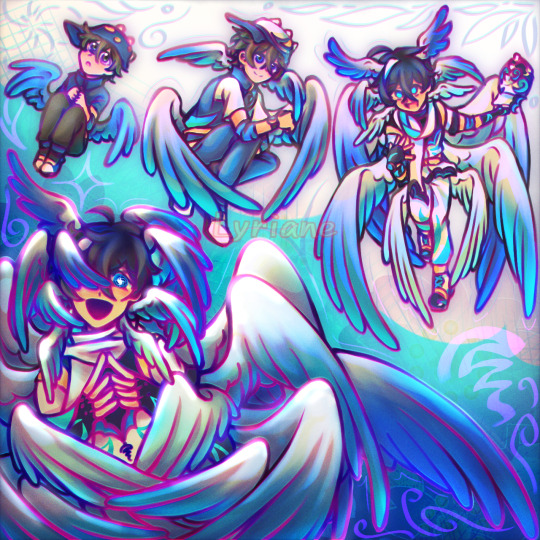
I KNOW that the signature for wind element is butterflies BUT— when you think of wind, don't you think of birds?
(aka me trying to justify my obsession with drawing wings)
> Rant & ramblings below cut, basically an info dump of my thought process/reasonings behind thy art.
OKAY SO. I REALLY like wings, drawing a bunch of them is even better.
Wind = Birds ; Birds = WINGS !!!
While I did draw this with just the intent of being able to draw wings on my baby boi.. I couldn't help but add in some lore(?) behind it too y'know.
In BBB, wind is associated with butterflies (Maripos has butterflies, Kuputeri has butterflies, Taufan angst has so much butterflies–) I had thought that, maybe, just maybe that the association of wind with butterflies is for Windara only. Then for Earth, the association of wind is with birds.
Because, really. What are the creatures that practically live in the skies? That soar through the wind? Birds. And what symbolism do we see birds as? Freedom. The wind is meant to be the embodiment of freedom.
(That does, make the underlying angst of butterflies = wind even worse/better. Butterflies fly lower than birds, butterflies die within 1-2 weeks. What a fleeting existence, only meant to taste freedom for mere moment.)
I thought it'd fit more for BBB's wind element to be associated with birds instead of butterflies. (Windara can have all of the butterflies, thank you very much). It would be a significant distinction between Kuputeri and BBB too, wouldn't it? Hence, the birth of this drawing.
I wanted BBB to already have wings since tier 1 as Angin though. However, I still wanted to keep the progressive evolution of Angin riding in small tornadoes, Taufan riding on his hoverboard, and only then on Beliung can he actually fly.
As such, I drew it so that Angin's wings are undeveloped, can't fly yet. The wings are specifically positioned on the lower back so it'd would even be harder for Angin to try and fly. Angin has these baby blue wings that he can't really use yet.
Then when he evolves into Taufan— the wings, of course, develops as well. There's now a gradient of white feathers to blue feathers, a new layer of feathers. Much larger than before, but still not enough. He has to use his hoverboard. Additionally, tiny wings also have sprouted at the back of his ears. Why? Because why not. Also, that new pair of wings is to show that he's in Tier 2.
One pair of wings = Tier 1
Two pairs of wings = Tier 2
There comes the big change for Beliung though. Beliung can now fly. The wings have now matured enough to be able to take flight. Of course, the elephant in the room is obvious the fact; Beliung now has, not just 3, but technically, 6 pairs of wings. Truly taking on the appearance of a Seraph.
For this one, technically it should be; Three pairs of wings & three pairs of ear wings = Tier 3
(I have also kept the scarf for Beliung, I can never draw him without it. To give the poor boi less of a hassle, I drew it so that his scarf is mostly wrapped around his neck rather than the long ends freely trailing behind him. It would be too hard to fly with that scarf, the risk of it tangling with his wings is high.)
Now, you my dear reader, has probably noticed the last drawing on the bottom portion. It's Beliung again, but this time, there's even. more. wings. For me, this one is a special case.
The wings itself aren't really truly wings though. Those wings are merely a byproduct of wind manifestation. The more wings that appears = the higher the power that can be used. (This is really just me making things up, but it's fun, so why not?)
Beliung has the ability to manifest as many wings as he wants.
The catch is that— BBB, he's human. These wings are basically limbs, parts of him. He can't handle too many appendages as once. At maximum he can only have 6 pairs of wings in total. Having more would result in overstimulation and loss of control.
Beliung though, Beliung himself– the wind element itself, or when in elemental split; He can handle many wings at once, as much as he wants too, and I would assume the personification of wind itself would love to have many wings.
That's basically it. My obsession with wings have resulted in this art of mine. Angin/Taufan/Beliung has become the Biblically Accurate Angel that I've always wanted to draw <3
If you've actually read it fully to this point, props to you and thank you for reading this info dump of mines!
46 notes
·
View notes
Text
˚ ♡ ⋆。˚ ❀ ARCANE CHARACTERS AND THEIR POKÉMON TEAMS !!!
includes: viktor // jayce // mel // caitlyn // vi // jinx // ekko
a/n: if you guys want a part two with any of the other characters, feel free to lmk which ones :D !!! i had a lot of fun with this, and it kind of went into a whole AU direction with all my ramblings. oops!
tagging @anexcellentshot <3
˚ ♡ ⋆。˚ ❀ VIKTOR

For his team, I wanted a collection of 'mons that would kill it in a steampunk themed show, so here we are!
GOLURK
Its lore centers around it being an ancient Pokémon built by an ancient civilization, so not much is known about it
To me, this Pokémon would be perfect for Viktor due to its aura of mystery and its creation by human hands
It also fits well with Viktor's arc when he becomes the Arcane Herald (glowing eyes, larger stature, commanding presence, associations with otherwordly abilities)
LUXRAY
I'm a firm believer in the fact that Viktor is a cat person, so of COURSE he gets a feline Pokémon
Luxray is an electric type cat. Need I say more?
Viktor's Luxray hisses at anyone who looks at him wrong. It's very funny. A total lapcat and demands his attention at all times
Everyone else who isn't Viktor can get fucked
KLEFKI
END KLEFKI HATE 2025
Why do people hate Klefki?! Being so serious right now btw... like are they just allergic to fun and whimsy or what. IDGAF if its just a key that became a Pokémon, it's one of my faves forever and always
Anyways. As for its relevance to Viktor, I see it as sort of being a good assistant for him in the lab and such. Carries his keys, yes, but also his tools for him
ALAKAZAM
I'm pretty sure it's the most intelligent Pokémon, and Viktor is a whole genuis
The dots connect!
Alakazam likes watching Viktor work on his various projects, and it oftens plays chess with him. A very intellectually stimulating experience for them both. The score currently is very close, although whose ahead, we'll never know :-)
GALARIAN CORSOLA
OK SO ORIGIN STORY !!!
We know Viktor grew up in the Undercity, and where he was shown had a river with cave systems nearby. I believe him and Corsola found each other the same fateful day he met Rio
They see each other as kindred spirits, having suffered in the environment they were dealt. Viktor is protective of his Corsola, and caring for it makes him feel a sense of accomplishment
Very bittersweet
MAGEARNA
A Pokémon that was also built by human hands, specifically by scientists according to its lore
It also has an ability that makes it a wonderful caretaker of people
That falls in line with Viktor's motivation to use Hextech to improve the lives of the less fortunate, and this Pokémon fits his aesthetic so well. I think Magearna is a wonderful way to end his team with :3
˚ ♡ ⋆。˚ ❀ JAYCE
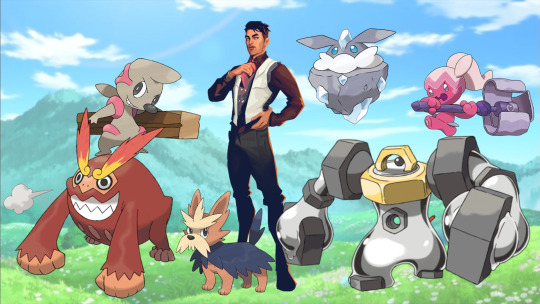
His character grew on me. Jayce Talis, you should've been born into a shoujo, not forced to shounen </3
TIMBURR
Very helpful fella to have around a lab! Construction sites! Factories! That's the Talis family specialty!
His first Pokémon, and the two often played with wooden building blocks and LEGOs in his childhood
Specifically choosing the first evolution because I can see Jayce's Timburr growing alongside him in the craft and one day evolving into a Gurdurr, and perhaps even a Conkeldurr
Or maybe it can stay a baby, who knows?
HERDIER
Looks like Heimerdinger. I am GREATLY amused by this
Is the Talis family dog, and followed Jayce when he went off to the Academy
Always sighing like its got bills to pay but that's because it has to watch over Jayce away from home 😭 Get him a martini (dog-friendly) and a long vacation ASAP
Big theme of family and Pokémon with Jayce here hehe
TINKATUFF
Another great Pokémon to help Jayce out with his endeavors!
This one has the most attitude of his team, and only helps with extremely ambitious, daring projects
It wants to improve, and taking up easy shortcuts is an insult
Overall, a diva
He loves it anyways, and always makes sure to express his appreciation because its efforts DO pay off handsomely
DARMANITAN
Jayce works in a forge at some point in the series, so having a Darmanitan with him just fits
It can withstand the high temperatures and has the muscle to help him out
I was debating between this fella and Heatmor but I like Darmanitan's rotund look better, sorry Heatmor
CARBINK
Very mystical Pokémon. Parallels the Mage that saved Jayce and Ximena when he was a child
Also resembles a Hextech crystal lowkey
MELMETAL
I think it's SO funny that it has "Mel" in its name
Also, more continuation of Pokémon that can dabble in craftsmanship
Evolved from a Meltan that snuck into his luggage when he was moving to the Academy district and refused to leave
˚ ♡ ⋆。˚ ❀ MEL

I wanted a team that serves both cunt AND power, so here is Mel's team! Looking for a transparent BG, full-body picture of her was actually so hard. What the flip. I thought it'd be in her Arcane Fandom Page Gallery, but it wasn't. AUGH
DELPHOX
Fox motif
Also a mystical one too, since its lore states that its burn marks were used in divination long ago
Mel being a mage means she can connect with her Delphox on a deeper level
KOMMO-O
Noxians are people who value raw, physical strength
Ambessa is canonically a warmonger. Mel having a fighting type Pokémon like Kommo-o goes well with that lore
It's powerful, dual-type with DRAGON, and just radiates aura
Also, its scale patterns and her braids can sort of match in style and it also works with Mel's gold accents!
UMBREON
Evolved from her Eevee
It happened around the time Mel left home for Piltover for the first time. Their bond runs deep
Hates being confined to a Pokéball, so it roams out and about at all times
SNEASEL
Devious Troublemaker #1
Smart AND sneaky
It's resourceful with its wits and stealth, like Mel
Tolerates her Fezandipiti
FEZANDIPITI
Devious Troublemaker #2
Abuses its pretty privilege to get away with EVERYTHING (it works)
Best buds with her Sneasel
INDEEDEE
A Pokémon that "never leaves its trainer's side", so it makes sure she stays taken care of and GOD KNOWS she deserves a break
Secretary Pokémon basically
Keeps tracks of her papers, blueprints, speeches, and council talking points
Hovers over her during the duration of those meetings and makes sure she's comfortable
Also really, really good at snooping around and finding out the most incriminating secrets. Memorized everything to the letter
˚ ♡ ⋆。˚ ❀ CAITLYN
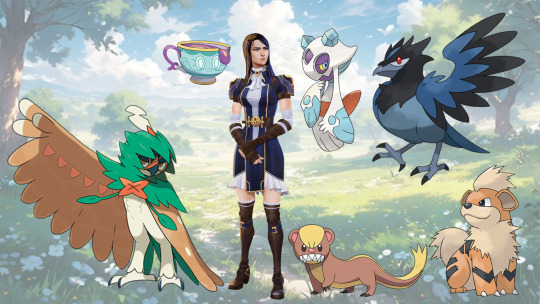
Firm believer that she would be a competitive player in a modern world.
FROSLASS
Cold as hell (figuratively AND metaphorically)
Just like Caitlyn
It's a feminine Pokémon and it's TERRIFYING, I love creepy/non-conventional Pokémon lore
Highkey judgemental. Has purposefully iced out a council membor on more than one occasion. Thinks they're useless
SINISTEA
They're kind of twinning. Tell me you guys see the vision too
Like... same side part and everything !!!
Tea parties and they're both the prettiest princesses. They also talk about the best way to 'get rid of' Salo. It's great
Caitlyn never utilizes her Sinistea in battle. It follows her around instead, offers an off-putting vibe to the function
YUNGOOS
Yes, this is because of the mongoose comment
Also I think it's really funny that you have these elegant and put-together Pokémon on her team, and then there's this guy
Bites ankles
DECIDUEYE
She's a sharpshooter and so is Decidueye
Had it since it was a wee Rowlet, and the runt of its litter (nestmates? flock? i don't know bird terminology)
With her in every shooting competition and practice she attends
Her ace Pokémon. They're so in sync, she doesn't even need to voice moves aloud anymore
GROWLITHE
Enforcer ☹️
CORVISQUIRE
It's intelligent, even compared to other bird Pokémon similar to it
Also has that air of innate curiosity
Caitlyn had her whole detective thing in Season One of the show, so her having a curious corvisquire on her team makes sense to me
˚ ♡ ⋆。˚ ❀ VI

If Vi has no lovers, I'm DEAD!!! Literally became one of my favorites the second she showed up one screen. I’m also the eldest sibling so maybe I connect to those characters more… Choso from Jujutsu Kaisen is another absolute faves of mine.
URSHIFU (RAPID STRIKE STYLE)
Matches her boxing fighting style
Very focused and disciplined
Her go-to sparring partner
LOKIX
A good kicker is needed to balance out a team of mostly fist-to-fists combat
Makes sure she does not skip leg day
Not that Vi would ever but it's nice to have someone look after her like an elder sibling for once
ALCREMIE
Similar to Caitlyn having Yungoos on her team, I find it funny to have Alcremie be the contrats on Vi's team
Her calling Caitlyn "cupcake" all the time? Please
Vi dotes on her Alcremie
First Pokémon she caught that wasn't in the Undercity, so it's a little bit of a primadonna, but who cares? It's adorable
Head chef of the team because picturing this little 1'00" Pokémon bustle around a kitchen area and whipping up delicacies makes me laugh
RIOLU
The youngest on the team and has the most to prove
Or at least, that's Riolu's mindset
Follows her Urshifu around like a little shadow, eager to learn and become the strongest of 'em all
Will evolve into a Lucario one day
CHARMELEON
Complements her color palette
I firmly believe she would choose a fire-type starter in any game route
Also has an insatiable fighting spirit, which I believe can be properly nurtured with Vi as its trainer and the rest of her team
Pairs up with her Riolu the most during sparring practices
ALOLAN MAROWAK
Both Vi and Marowak lost their mothers at a young age
Both watched their mothers die, even if the circumstances were slightly different
Not having a Cubone that evolved into a Marowak on her team would've been such a missed opportunity
˚ ♡ ⋆。˚ ❀ JINX

Her team was the first one I finished putting together in my Google Docs. Very happy with how this one turned out.
BOMBIRDIER
The word "bomb" is kinda in the name
AND that fuckass bird is an asshole, according to it's Pokédex entry
I think it's hilarious, and fits Jinx's antics very well, especially with her first scene after the timeskip in season one
PANCHAM
The Pokedex entry for this one says it finds a Pangoro to look up to and trains relentlessly to get stronger like its mentor
Very much a reflection of how Isha looks (looked) up to Jinx, and wanted to be like her :')
NICKIT
Only surviving kit in the litter of Silco's Theivul
Naturally, it became Jinx’s Pokémon
Messes with her Espurr all the time. Gets lightly scolded, pretends to feel bad, and gets right back to it when her back is turned
Brings her scraps of metal and other shiny valuables it nicked (haha!) from unsuspecting citizens
HISUIAN TYPHLOSION
NOT A GOOD YEAR FOR MY BOY TYPHLOSION
Justice for him for REAL.
But anyways. Colorful flames, extravagant, explosions. It basically spells itself out
Keeps her Nickit in check when it gets too rough with her Espurr
INFERNAPE
Her signature calling card is the graffiti monkey
Her monkey bomb/gadgets !!! Motifs...
The most disciplined of her Pokémon
ESPURR
Look at it and tell me it isn't experiencing the horrors(tm) and the voices(tm) at all times
I think Jinx could see herself in it in a way, and having Espurr on her team is kind of a grounding experience for both of them
They save each other
This lil guy is her PRIDE AND JOY ok
˚ ♡ ⋆。˚ ❀ EKKO
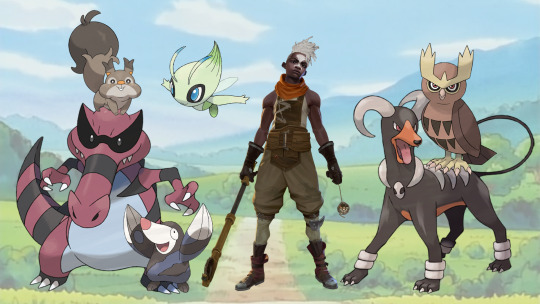
Ekko deserves the entire world and more, I'm being so serious right now. Ekko 4 President.
DRILBUR
Little guy who just enjoys digging. Yeah, put him on the team
Would be very helpful for finding trinkets that Ekko could bring to Benzo's (in a happier timeline, they continue spending their days like this)
When the canon events happen, its role now becomes finding/forming tunnels and escape routes
NOCTOWL
Scout in the air
Goes along with Ekko's owl motif :D
Caitlyn already had Decidueye, and I feel like a tougher, more rugged looking Pokémon like a Noctowl fits the boy savior better
His team is a lot of earthy tones I've realized
Undercity Represent 🗣️🗣️🗣️
CELEBI
Ekko's connection with time, the four seconds, etc. etc.
Celebi is a time traveling Pokémon. It's perfect :3
I think he's the only character with a mythical Pokémon on his team, and you know what? He deserves it. Big Ekko fan! He can have a mythical Pokémon, as a treat
HOUNDOOM
If aura farming was a Pokémon
Looks tough, is an even tougher fighter
The rear-guard of his team. It looks out for the other ones and makes sure they all get to safety whenever it's brought along during one of Ekko's missions
Acts as a heater for the others and Ekko himself
Completely chill with letting Noctowl perch on its back
SKWOVET
Ok hear me out, this is the comedic effect guy
I headcanon that he pulls a Meowth in the anime and taught himself to speak human. NOT for the pursuit of romance this time, but for the pursuit of gossip
One of the tiniest ones recorded, so it sneaks around really easily
Like Mel's Indeedee, it gathers talk and whispers that otherwise would not see the light of day, and relays it all back to Ekko
It keeps him up to date on movements of other political factions and certain people (Jinx)
Has grown spoiled on all the treats it gets fed from being really damn good at its job
KROOKODILE
Found by Ekko during one of his explorations underground with his Drilbur
Battled against his Drilbur, and then his Houndoom when they broke up into the surface
Was eventually caught, and now goes on side quests with Ekko's Drilbur
Gives Ekko some peace of mind knowing that Drilbur has a bigger, more formidable friend watching out for it
Totes the coolest, rivalling Houndoom in levels of chillness
#arcane#viktor arcane#vi arcane#caitlyn kiramman#jayce talis#mel medarda#ekko arcane#arcane fic#viktor nation#arcane headcanon
31 notes
·
View notes
Note
Any thoughts on Moonpaw’s design? Do you plan to make her appearance a bit more unique/utilize the chimera a bit more?
Honestly I think her canon design is pretty fantastic! I don't agree with those who're saying it's not unique lmao, like, the team's never been THIS creative before. She blows Pure Gray Cats 3, 4, and 5 out of the water.
But, boy oh BOY am I gonna have fun with this one. Last night I sketched up a possible combo for each Moonpaw from the options I presented. Whichever one gets picked I'll tweak more, but I went ahead and made a 'base' character design for each one.
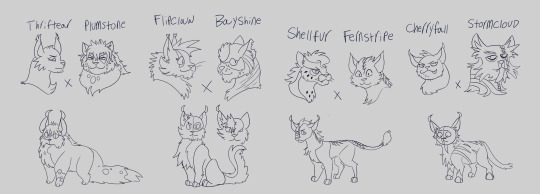
Also bonus: Headshots for all of the possible parents. Note the slight update for Stormcloud, I figured out a better way to draw his cheek fluff and changed his stripe pattern a bit
Whatever designs end up not being used for Moonpaw, I'll probably tweak for another new litter. ThriftPlum and ShellFern's hypokits will slot well into the eventual ShellFern litter we (HOPEFULLY) get soon, and with a slight edit, StormCherry's can be a new Honeyfur.
PlumThrift
This one's becoming the least likely to happen I think. It could still win if it's the most fitting with the arc, supposing canon ends up writing a strained relationship between Moon and her parents, but based on the preview stuff that's not the case.
Still! I do like the Two Soccer Moms And Their Weird Child lmao.
Thrift and Plum are a downright deadly united front. They play Good Cop Bad Cop like they're practically telepathic. So I tried to get that across in their headshots.
Plumstone always looks laidback and chill. Thriftear exudes an aura of seriousness.
Their weird child inherits neither of these things. She looks like she eats bugs.
I decided to make this Moonpaw look REALLY fluffy. Plumstone inherited her grandpa Graystripe's body type, so it would be a shame if Moony didn't get it too.
FlipBay
BB!Bayshine is a DustFern descendant. He has his great-grandfather Dustpelt's plate.
The stripes come from grandfather Birchfall, who gave them to mother Duststripe.
Flipclaw is strikingly similar to his grandfather Lionblaze, back before he started balding.
While drawing this one I started trying to play around with the chimera idea more, that she's half of one cat and half of another. When the face plate came into it, it STRUCK me like lighting
It looks like phantom of the opera!!
So I started experimenting with one side being shorter-furred, and got a draft down before moving on to a waaay more in-depth design.
This was the last one I did last night before going to bed, so I'll post the evolution I made in a separate post. It's the one with the most potential thanks to the plate so it got pretty big.
ShellFern
Most Moonpaw designs are chunky, but I've always seen Shellfur as pretty slim. Definitely the slimmest in his recent family-- since Graystripe, the Dapplekin family has been thick and fluffy.
Mix that with Fernstripe, a WindClan cat, I made this Moonpaw resemble some kind of gazelle.
Fernstripe has this long, "fern-shaped" stripe on her body. Paired with Moonpaw's half-black body it looks kind of like stitches which is, imo, cool as fuck
I let her crescent-tufts add to the shape too, they curl in like horns... though, I am worried it looks too much like Curlfeather.
I'll probably give this one another pass if Moonpaw ends up being a ShellFern baby.
Also this take makes her took a bit more grumpy so she's closer in personality to her dad.
StormCherry
This is actually the first one I did
Cherryfall has a perfectly round, cherry-shaped face. She actually looks a ton like her dad, Berrynose.
I wanted to give Moonpaw that same face, because hers is simply a half-moon.
She looks like a stressed-out eevee and I kinda dig it LMAO
In color, this Moonpaw would probably lean more towards red than ginger. I see Cherry as a reddish cat.
She could also inherit Poppy's special red eyes-- she got those from being fetched away from StarClan by Jayfeather. Shadowsight also got them.
The stripe pattern is from Stormcloud. I decided recently that I'm going to try and limit thunder-shaped stripes to the Tigerkin family, something they inherit from Thunderstar himself. So Stormcloud's are now transverse across his body, with a distinct nose snip.
When I finally do decide StormCherry's kits, be that now with Moonpaw or later, I'll standardize Stormy's new stripes by giving him a new fullbody.
103 notes
·
View notes
Text



REBORN KING GREGOR {Limbus Company}
Woe, extremely self-indulgent concept be upon ye. A.K.A. "What if Gregor got an ID where he was both happy with himself (not in the "throws himself into being a weapon" sense) AND more bug?"
I've had this design/concept, through multiple revisions, sitting around for ages. Finally got around to making a colored piece of him after seeing some people theorize that he's going to Bug Out™ at some point after what we've seen in the new Intervallo. So I decided to take this concept back out of the shed to finally post it publicly. The two sketch pages are a hodgepodge of sketches of different ages from multiple other concepting sheets lmao. He deserves to be both happy and more bug at the same time. Most of his "happy" IDs have him lack his bug arm.
Meet Gregor, the Reborn King! He's a funky earwig-mantis-roach thing that runs his own cult of personality.
I'm not going to hash out any coin or Sin Affinity info, because I don't know what to give him for those things. I also don't know if he'd work better as a Bleed + Poise unit or Bleed + Rupture unit. All I know is that his "in-game" gimmick would basically be Dawn-Office Fixer Sinclair and Wild Hunt Heathcliff's "form change" gimmicks taken to the extreme: Progressing through multiple forms where he cannot change back after reaching the next form (kind of like a Pokemon evolution). These forms are Base (1), Chrysalis (2), and Reborn King (3). Base needs to build up enough stacks of a unique status (which I'm calling "satiety" for now), which then makes him enter Chrysalis, which he needs to survive (with special Guard skills) for a specific amount of turns to emerge as the speedy glass cannon that is the Reborn King state. Each state has completely different moves and/or Affinities.
TL;DR for this Greg's story: His bug mutations became more severe, and then one day his body made a chrysalis, and then he came out both as Extra Bug and with both human arms back. Then he founded a cult... or maybe the cult found him. Who knows lmao. Compared to being treated like an animal, a mere tool, a weapon with no humanity, running a cult is a pretty sweet gig. Definitely a better gig than a lot of fates in the City lmao.
(Meta + in-universe) Info:
- His cult is simply known as the "Cult of the Reborn King".
- He's got little mantis feetsies at the end of his big claws! I drew them (and the feet on his legs) simplified.
- He's got the mantis shimmy when walking. You know the one. He prefers to fly when wanting to get anywhere with any good speed.
- The amount of bug limbs he has is asymmetrical. One on the right side of his face, two on his neck, his two big claws, one tiny claw on the right side of his torso, and four legs, making for ten bug limbs in total (not counting wings and tail). If they were symmetrical, then there would be twelve.
- His general body shape/posture and big claws are that of a mantis, while the wings and tail shape/pincers are those of an earwig. Pinchy tail and big fancy wings that fit in a tiny elytra. - (Fun fact: Did you know that roaches, mantises, and termites are all related? They're all Dictyopterans.)
- He probably has a Mouth of a Thousand Nightmares if he fully opens it. Just don't let him catch you catching him cleaning his claw-feet like how mantises do it and you should be fine lmao.
- Unlike earwigs, he has a stinger. No venom or ovipositor, he just Fucking Stabs You. It's retractable, so he generally keeps his pincers closed over it.
- The extra asymmetrical limbs + plating on his face are based off of the G Corp Manager Corporal Gregor ID.
- The thing he's holding is a fancy smoking pipe, its shapes based off of his old pre-chrysalis claw.
I hope you like it!
#Limbus Company#Project Moon#LCB Gregor#Limbus Company Gregor#Gregor#bug#bugs#mantis#fanart#fan art#Brackets Draws#Brackets's Art
22 notes
·
View notes